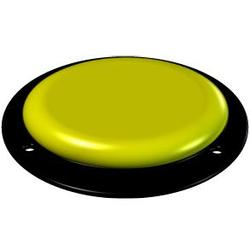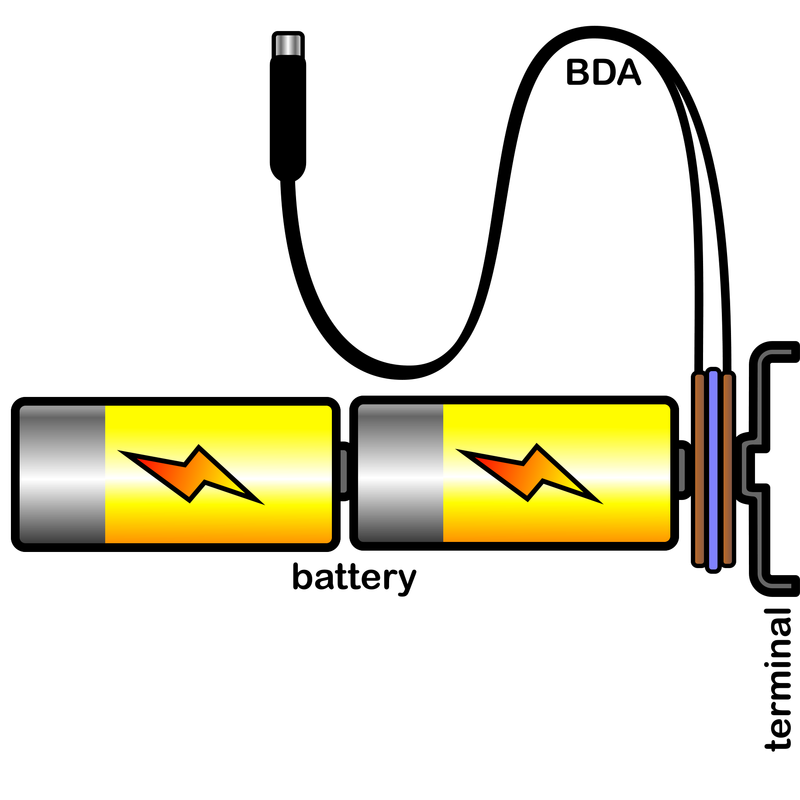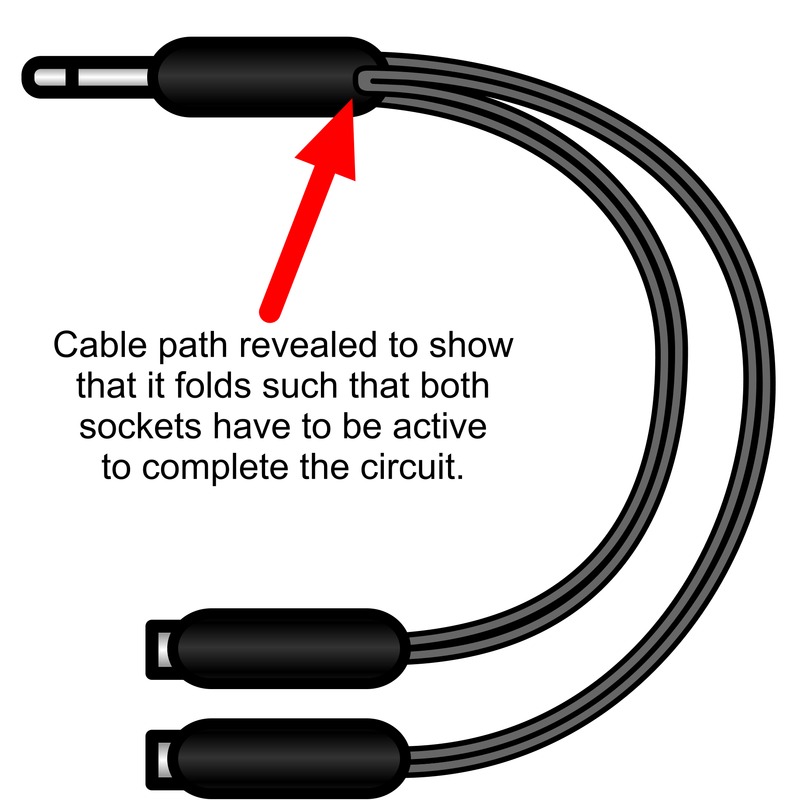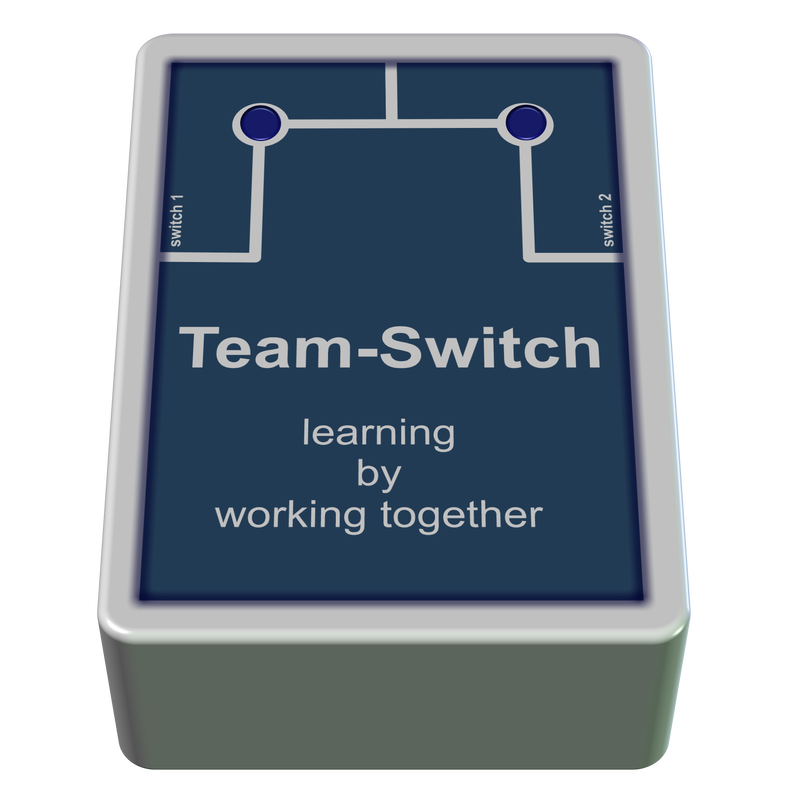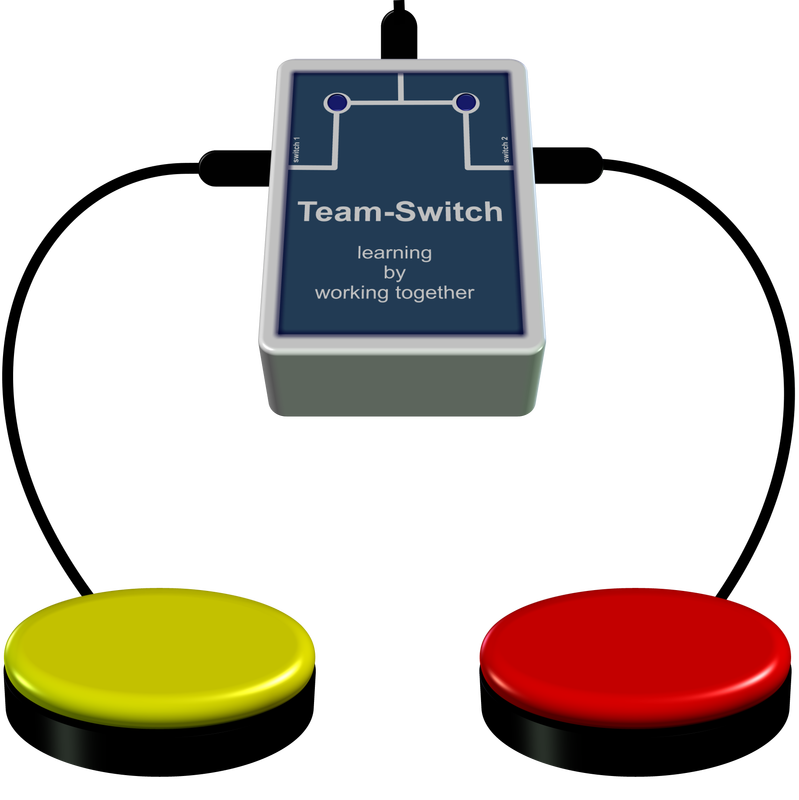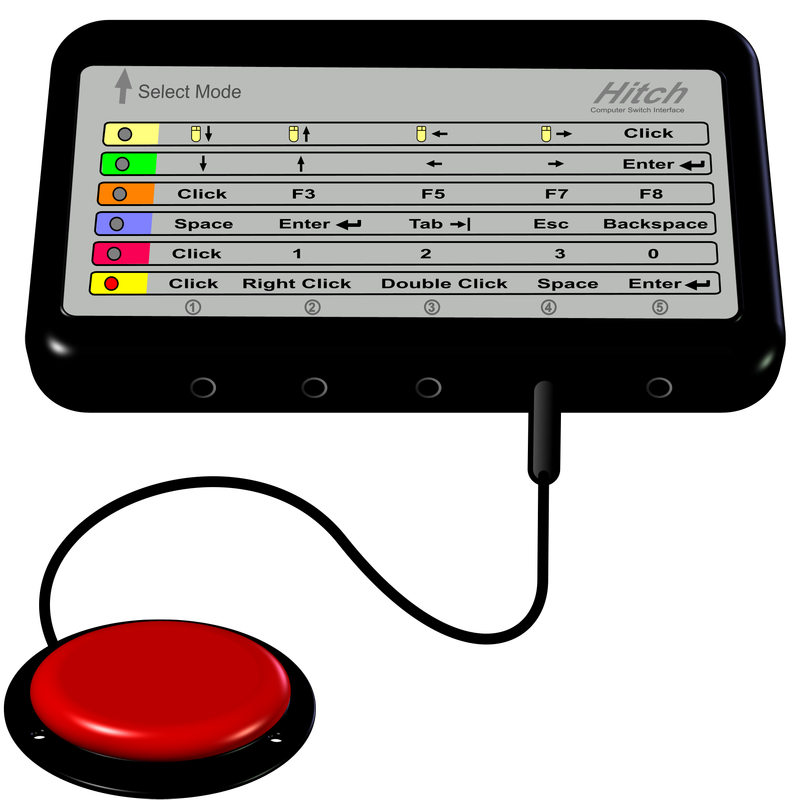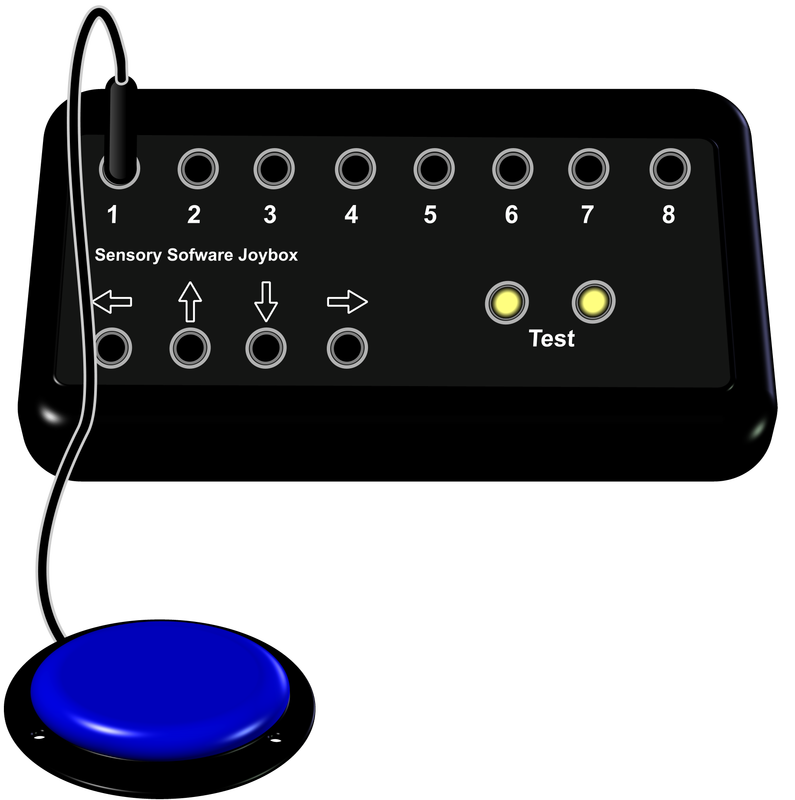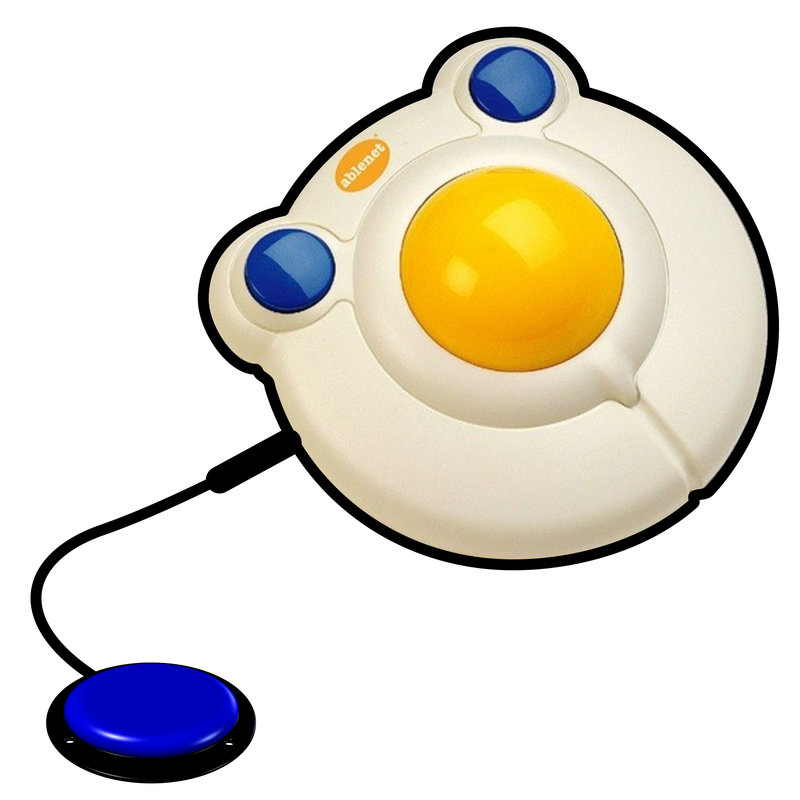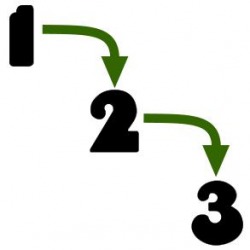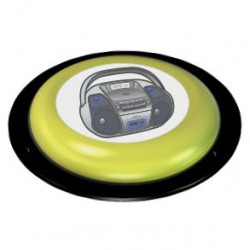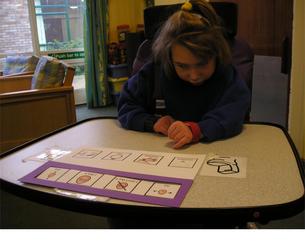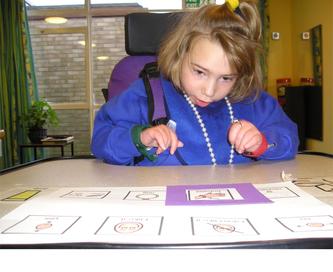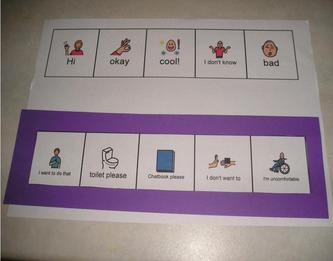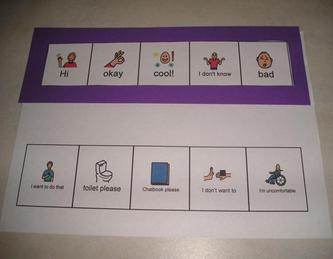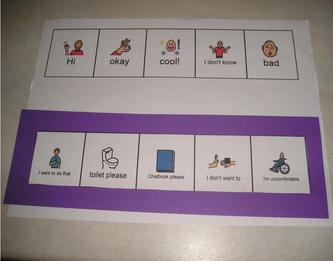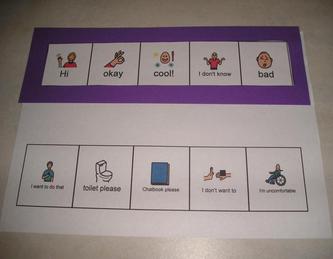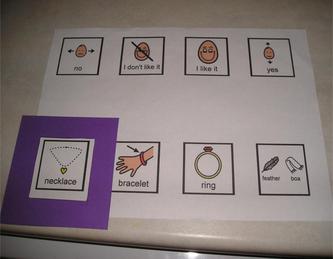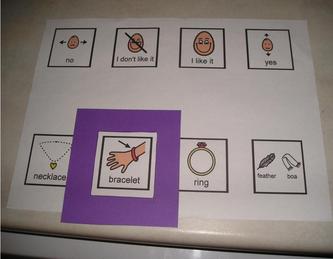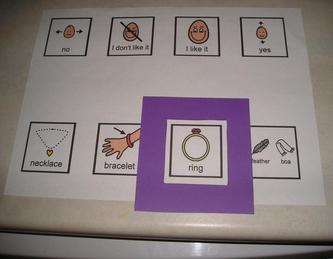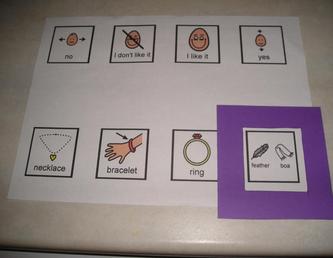Switching to Success
Introduction
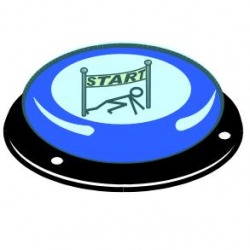
This page is all about switches and switching, from the introduction, through cause and effect and onwards to more advance skills such as scanning. There is still a lot of ill informed practice out there. This page seeks to improve knowledge of the implementation of switches for staff and Significant others working with people (children and adults) experiencing learning difficulties and or a physical disability. If you think anything is missing please form this section of the website, please use the form at the bottom of the page to make contact. Equally, if you disagree with any point made, please feel free to make contact and have your say. In such a way, we will be able to move forward to even better practice for the good of all Learners and their supporting staff.
This area of the web site details the steps involved in developing and grading switching skills in the novice Learner.
There are a number of downloads that are freely available for non-commercial use at the bottom of the page. They may not be re-posted on any other website without permission of Talksense.
This area of the web site details the steps involved in developing and grading switching skills in the novice Learner.
There are a number of downloads that are freely available for non-commercial use at the bottom of the page. They may not be re-posted on any other website without permission of Talksense.
Training Courses on Switching Skills
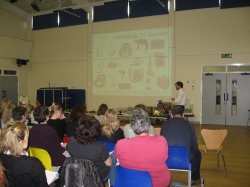
TalkSense Training Session
Training for switching skills and switch development is available from Talksense. If this page inspires you and you would like everyone in your establishment to share in this knowledge, why not book a training day from TalkSense? Simply contact Talksense using the form provided at the bottom of the page and let us know where and when and who and we will get back to you as soon as possible. The PowerPoint from the Talksense training day is available for download at the bottom of this page.
How to use this page
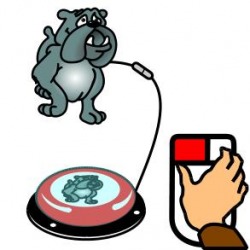
On this page the images may lead to further information on the specific topic area. If the cursor changes to a hand when the mouse is over the image, then a link is available. Simply click on the image to move and discover more on a specific topic area. You will be able to navigate back to this page after any move away.
Try it with using image to the left. Hit the left arrow key on the new page to return to this page.
From time to time this page will be updated. So you will know when new information has been added the date counter below will be updated.
This page was last updated on:
28th March 2014
Try it with using image to the left. Hit the left arrow key on the new page to return to this page.
From time to time this page will be updated. So you will know when new information has been added the date counter below will be updated.
This page was last updated on:
28th March 2014
What is a switch?

A switch is a device that enables an individual experiencing a learning difficulty and/or a physical disability to operate some part of a mains or battery-powered system through a single action.
The most common switch in use in special education is probably the Jelly Bean format originally designed and produced by AbleNet. These now come in a range of four interchangeable colours (the switch top unscrews to allow it to be chaned for one of a different colour). There are other similar switches produced by others companies, for example Unlimiter produces a switch known as an Access Switch that has a screw on switch cap. The AbleNet switches come in three sizes (small (Spec Switch), medium [Jelly Bean] and large [BIGred]). Typically the switch comprises:
- a coloured switch top (Red, blue, green or yellow for the Jelly bean range)
- that is attached to a black flanged base. The falnge has three circular holes to allow the switch to be attached
to a mounting system. Not all circular switches have a flange.
- a transparent switch cap whose purpose is to hold (and protect) an identifying symbol to the switch top.
The switch top is sprung so that it can travel up and down slightly to allow the operation of an internal microswitch when the surface is pressed. However, not all switches look or work in this manner. There is a plethora of styles designed to suit a wide variety of needs.
Why Switch?

For some Learners a switch provides a necessary interface with the external world: a vital, and almost independent, link that would be difficult to achieve without it.
A switch simplifies the operational process involved in controlling the whole (or a part or function) of a battery or mains powered item which may otherwise be difficult to control for reasons involving cognitive processing or physical access.
While a toy or appliance may move, a switch can be mounted and provide a stable, fixed point of access with which an individual may work.
A switch can provide safe access to another system that otherwise would be unsuitable for personal use.
Switches are everyday phenomenon: we all use switches in at least one of the above ways every day. The switches we use may not look like the ones depicted above but they perform similar functions and our world would be inaccessible without them.
What switches are avialable?

There is a huge range of commercially available switches and, while it is not the purpose of this area to detail them all (and, as there are new switches emerging into the market all the time, it would be impossible to achieve), the basic types are listed (alphbetical order) below. For a brief description of each type of switch please click on the wobble switch symbol to the left and you will be taken to the page dealing with this area of switching.
In the UK switches can be obtained from a number of companies the majority of whom are listed in the company links section of this web site. Included are the folowing companies (listed alphabetically) that all market switches from their websites:
Ability World, Inclusive Technology, Liberator Ltd, QED, Techcess
Switch formats listing ...
Standard switches (Big Red, Jelly Bean, Access Switch, Buddy Button …);
Air Pressure Switches;
Cushioned switches;
Eye Blink Switches;
Grip Switches;
Lever Switches;
Mat Switches
Mercury Switches (Modern types contain no mercury!);
Plate switches
Proximity Switches;
Piezo Electric Switches;
Suck & Puff Switches;
Thumb Switches;
Tongue Switches;
Toy Switches;
Variable Pressure Switches;
Wobble Switches;
Other Specialised Switches (Integra Switch, String Switch, Twitch Switch …).
There is no pretence that this is a complete list of every switch type on the market. There are a vast number of switches in all shapes, sizes, materials and colours that can be operated by hand, foot, head, indeed any part of the body over which the Learner has some control. A good place to begin to look at the range of switches available is the AbleNet website. Even if the Learner has a severely restricted range of movements there is a switch that can sense and act upon it. There are a number of switches that are in the form of toys that make sounds and light up and even vibrate. There purpose is to encourage Learners to interact with them for their own intrinsic pleasure prior to their subsequent use as a switch. Such a range of switches can be seen on the Enabling Devices web site.
In the UK switches can be obtained from a number of companies the majority of whom are listed in the company links section of this web site. Included are the folowing companies (listed alphabetically) that all market switches from their websites:
Ability World, Inclusive Technology, Liberator Ltd, QED, Techcess
Switch formats listing ...
Standard switches (Big Red, Jelly Bean, Access Switch, Buddy Button …);
Air Pressure Switches;
Cushioned switches;
Eye Blink Switches;
Grip Switches;
Lever Switches;
Mat Switches
Mercury Switches (Modern types contain no mercury!);
Plate switches
Proximity Switches;
Piezo Electric Switches;
Suck & Puff Switches;
Thumb Switches;
Tongue Switches;
Toy Switches;
Variable Pressure Switches;
Wobble Switches;
Other Specialised Switches (Integra Switch, String Switch, Twitch Switch …).
There is no pretence that this is a complete list of every switch type on the market. There are a vast number of switches in all shapes, sizes, materials and colours that can be operated by hand, foot, head, indeed any part of the body over which the Learner has some control. A good place to begin to look at the range of switches available is the AbleNet website. Even if the Learner has a severely restricted range of movements there is a switch that can sense and act upon it. There are a number of switches that are in the form of toys that make sounds and light up and even vibrate. There purpose is to encourage Learners to interact with them for their own intrinsic pleasure prior to their subsequent use as a switch. Such a range of switches can be seen on the Enabling Devices web site.
Remote or Wireless Switching
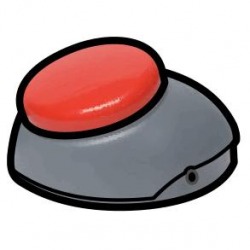
Remote switching is not quite wireless switching but almost! There is an absence of wires between the transmitter and the receiver BUT the appliance will have to be connected to receiver and, if the Learner is using his/her own switch, then it will have to be connected to the transmitter. At least three types of technology are utilised in remote/wireless switching presently: Infrared, radio, and bluetooth. As infrared requires direct line of vision and can be temperamental its use for this purpose is rapidly diminishing.The majority of remote switching devices are either radio or bluetooth technology. Both technologies work on a similar manner. There are two basic components: a transmitter unit that send a signal to a receiver unit. Some units have additional features such as latching or timer capablities that permit a Learner to make a momenatry access of a switch and yet provide timed or continual control of the appliance.
The symbol depicts the transmitter unit of the Jelly Beamer from AbleNet. It comes complete with a similar receiver unit which can be pluged into a toy (for example). The transmitter unit can be operated from the red switch cap on its top OR a jack socket is provided so that another switch can be plugged into the unit to operate it. Both the transmiiter and receiver are battery operated. These may be standard or rechargeable batteries depending on the particular model purchased. The range of such devices far exceeds that which is needed for their use: many will operate from outside of a room, for example. Though, why you would want to switch an appliance from outside a room is beyond me! There are several such remote switching devices available: for a list of products please click on the symbol.
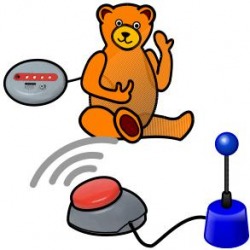
Please note that remote switching to toys and remote switching to computers will require slightly differing interfaces. Computers generally require a switch accessible USB interface. Such an interface typically resembles a memory stick with sockets for switches. Software is provided so that the switch inputs can be configured to behave as though they were any keyboard key. In remote versions, the USB interface is able to receive signals from a separate transmitter to which switches may be attached. Typically, such interfaces will work with up to 2 switches but there are more specialised systems available that can operate with 8 or more switch imputs.
In the image, an Unlimiter Wobble Switch has been plugged into an AbleNet Jelly Beamer that is transmitting to its receiver unit to operate the Excitim switch adapted bear toy. All these components are available from the companies listed earlier.
Why use remote switching?
There are a number of reason that include:
Safety - don't attach switches directly to boiling kettles, for example.
Learner behaviour - Learners that tend to pull on wires may need wireless switching.
Space - There is not room on the Learners chair to include all the equipment and the cables do not stretch far enough
Convenience - The Learner is laying in bed (for example) and wishing to operate a cd player on the other side of the room.
In the image, an Unlimiter Wobble Switch has been plugged into an AbleNet Jelly Beamer that is transmitting to its receiver unit to operate the Excitim switch adapted bear toy. All these components are available from the companies listed earlier.
Why use remote switching?
There are a number of reason that include:
Safety - don't attach switches directly to boiling kettles, for example.
Learner behaviour - Learners that tend to pull on wires may need wireless switching.
Space - There is not room on the Learners chair to include all the equipment and the cables do not stretch far enough
Convenience - The Learner is laying in bed (for example) and wishing to operate a cd player on the other side of the room.
Switching Targets and Objectives
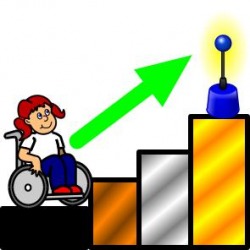
If we are using switches to enable a Learner to access the world, it will be necessary to set a number of targets:
TARGET: The Learner will be able to control her/his environment through switch activation.
As the example given is a large target, it will need to be broken down into a number of (much) smaller quantifiable objectives that will allow staff to recognize when the target has been achieved. It is impossible for this page to set the exact objectives for every single Learner as each is an individual and so objectives have to be personalized. Thus, the objectives outlined on this page are but examples of possible objectives and may be adopted, adapted and rejected as is appropriate. The Learner, who has no vision, for example, will not be able to ‘look at the switch’ but nevertheless may be made aware of the (tactile) switch in a specific location in his/her personal space.
To view a listing of the objectives for the above target please click on the symbol.
At a later point on this page, TalkSense will attempt to produce a 'switch grading system'
TARGET: The Learner will be able to control her/his environment through switch activation.
As the example given is a large target, it will need to be broken down into a number of (much) smaller quantifiable objectives that will allow staff to recognize when the target has been achieved. It is impossible for this page to set the exact objectives for every single Learner as each is an individual and so objectives have to be personalized. Thus, the objectives outlined on this page are but examples of possible objectives and may be adopted, adapted and rejected as is appropriate. The Learner, who has no vision, for example, will not be able to ‘look at the switch’ but nevertheless may be made aware of the (tactile) switch in a specific location in his/her personal space.
To view a listing of the objectives for the above target please click on the symbol.
At a later point on this page, TalkSense will attempt to produce a 'switch grading system'
The Switch Rules
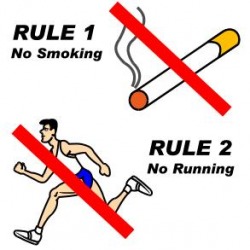
There are at least ten rules that are relevant when working with switches. Of course, there are exceptions to most rules but, generally, these rules apply unless there is a good reason to ignore them. They are listed below. However, if you want a fuller explanation of each of the rules please click on the symbol in this section of the web page. The tenth rule concern safety; one should not assume that as it is last in the list that is not of great importance - it is! The is no real connection between position in the list and relative importance of any item within.
If you believe that there are items that are missing from this list please contact TalkSense using the form at the bottom of this page.
If you have serious disagreement with any of the items in the list please contact TalkSense using the from at the bottom of the page.
Click on the symbol to go to the switch rules page
Rule One Maintain the switch position
Rule Two Maintain the switch style
Rule Three Label the switch
Rule Four Focus on the POLE not the switch
Rule Five Mount the switch
Rule Six POLE should be proximal in space and time
Rule Seven Remove the switch when it is not in use
Rule Eight Provide sufficient response time
Rule Nine Maintain your goals
Rule Ten Safety First (although its the last rule)
All the above are detailed on the switch rules page. Please click on the symbol above if you wish to go there.
If you believe that there are items that are missing from this list please contact TalkSense using the form at the bottom of this page.
If you have serious disagreement with any of the items in the list please contact TalkSense using the from at the bottom of the page.
Click on the symbol to go to the switch rules page
Rule One Maintain the switch position
Rule Two Maintain the switch style
Rule Three Label the switch
Rule Four Focus on the POLE not the switch
Rule Five Mount the switch
Rule Six POLE should be proximal in space and time
Rule Seven Remove the switch when it is not in use
Rule Eight Provide sufficient response time
Rule Nine Maintain your goals
Rule Ten Safety First (although its the last rule)
All the above are detailed on the switch rules page. Please click on the symbol above if you wish to go there.
Switch Adapted Toys

Toys are fun. Toys are motivating, Toys can be visually stimulating. Toys can produce sounds, Toys can be multisensory. Toys can be used to teach the concept of object permanence. Toys can be used to teach the concept of cause and effect. Toys can teach numeracy, spatial awareness, even some ealy concepts in historical awareness! Why would we not want to make use of toys in the classroom?!
Some toys can be adapted so that they may be controlled by a switch. Switch Adapted Toys are both motivational and, if used correctly, can provide a means to educate Learners. There is a whole section of this website dealing with Switch Adapted Toys and their use in the classroom with Learners of all ages. If you would like to go there, please click on the symbol to the left.
The Battery Device Adapter (BDA)

Toys and other battery operated devices that are NOT accessible by switches can be made accessible very easily using a Battery Device Adapter.(BDA) (sometimes called a battery interrupter). The BDA is a simple system composed of two (normally circular) thin copper plates separated by a thin piece of insulating material all sandwiched together. A wire is soldered to each copper plate which terminate in a jack socket into which a switch may be plugged.
In order to switch adapt a toy (or other battery driven system), the copper plates must be inserted between the battery and a terminal. As the copper plates are separated by a thin piece of insulation, placing them between the battery and its terminal breaks the electrical circuit: the current travels (via the first copper plate) down the wire, through the jack socket and to a connected switch. When the switch is activated, the current can continue to flow back to the jack along the second wire to the terminal - thus completing the circuit.
With the BDA in place and the toy switched on, the toy is prevented from working because the BDA breaks the circuit. Only when the switch is activated can the current flow and the toy begin to work. Thus placing the sandwiched copper plates between the battery and the terminal switch adapts the system.
In order to switch adapt a toy (or other battery driven system), the copper plates must be inserted between the battery and a terminal. As the copper plates are separated by a thin piece of insulation, placing them between the battery and its terminal breaks the electrical circuit: the current travels (via the first copper plate) down the wire, through the jack socket and to a connected switch. When the switch is activated, the current can continue to flow back to the jack along the second wire to the terminal - thus completing the circuit.
With the BDA in place and the toy switched on, the toy is prevented from working because the BDA breaks the circuit. Only when the switch is activated can the current flow and the toy begin to work. Thus placing the sandwiched copper plates between the battery and the terminal switch adapts the system.
There is one further thing to do and that is to file a small triangular notch into the toys battery cover to allow the BDA's cable to exit. As battery covers are generally made of plastic this is a typically a simple and quick procedure.
Not all toys and battery driven devices can be switch adapted in this way. If the toy (or device) has a simple On/Off switch which, when moved to the ON position, causes the device to operate immediately, the device can be adapted. If the device does not start operating immediately when the On/Off switch is moved to the ON position then the device may not be suitable for switch adaption. However most toys and other devices (such as radios, torches, fans, etc) can be switch adapted using a BDA with the method outlined above.
NOTE: BDAs will only work with normal (AAA, AA, C, and D) batteries and not with specialist batteries such as watch batteries.
Battery Device Adapters can usually be obtained from your special educational needs supplier for a few pounds each. They generally come in two sizes: a larger size copper plate for the D size batteries and a smaller size copper plate for the AA and AAA batteries as shown in the first image above left.
If you are out shopping and see a toy or other device that you believe to be great for switch adapting, Talksense advises that you purchase it immediately as toys such toys tend to come and go very quickly and may not be there when you finally decide to go back and make the purchase!
Not all toys and battery driven devices can be switch adapted in this way. If the toy (or device) has a simple On/Off switch which, when moved to the ON position, causes the device to operate immediately, the device can be adapted. If the device does not start operating immediately when the On/Off switch is moved to the ON position then the device may not be suitable for switch adaption. However most toys and other devices (such as radios, torches, fans, etc) can be switch adapted using a BDA with the method outlined above.
NOTE: BDAs will only work with normal (AAA, AA, C, and D) batteries and not with specialist batteries such as watch batteries.
Battery Device Adapters can usually be obtained from your special educational needs supplier for a few pounds each. They generally come in two sizes: a larger size copper plate for the D size batteries and a smaller size copper plate for the AA and AAA batteries as shown in the first image above left.
If you are out shopping and see a toy or other device that you believe to be great for switch adapting, Talksense advises that you purchase it immediately as toys such toys tend to come and go very quickly and may not be there when you finally decide to go back and make the purchase!
Toys that have an on/off button but are operated by pressing a particular part of the toy (such as a paw or hand or the stomach) are NOT suitable for switch adaptation in the way described above. However, such toys can be adapted if you have the necessary skills as described in the video below
The Bifurcated Lead

Although difficult to get hold of these days, the bifurcated lead (sometimes called a split lead or a Y split lead) is a mono 3.5 mm jack plug that splits into two 3.5 mm sockets such that two switches can be plugged into a single device.
There are two types of such leads:
Type One: is where either switch will operate the toy or the device. Let's call this type a 'Two into One Cable'
Type Two: is where BOTH switches must be activated for the device to operate. If either switch is released then the device will cease functioning even if the other switch is still activated. Let's call this type a 'Co-operation Cable'. The uses of such a cable are detailed below.
There are two types of such leads:
Type One: is where either switch will operate the toy or the device. Let's call this type a 'Two into One Cable'
Type Two: is where BOTH switches must be activated for the device to operate. If either switch is released then the device will cease functioning even if the other switch is still activated. Let's call this type a 'Co-operation Cable'. The uses of such a cable are detailed below.
|
Uses for the Co-operation Cable
|
Team-Switch is a bifurcated lead in a box available from Excitim and Ability-World. It will do everything that was outlined above for the type two co-operation cable and comes with the necessary cable (but not with the switches) to connect it to your appliance, device or toy. With Team-Switch, as with all bifurcated leads it is possible to concatenate systems: that is to plug one Team-Switch into the switch input port of another. Chaining Team-Switches in this way adds one extra switch input per added box such that three or more Learners now have to co-operate to operate any appliance of three parts of the body (two hands and a foot for example) have to be used in unison. In theory, there is no limit to the number of people that could be made to work in unison to operate a single device! Talksense recommends the Team-Switch device to you.
Computer Connections: Switching the Computer
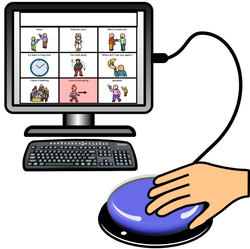
It is not normally possible to plug a switch directly into a computer; the switch has to be connected to an interface which typically connects to a free USB port. There are many such switch interfaces on the market and as they come and go it would be pointless trying to list them all here. However, if you search for "switch adapters and interfaces for disabled access to a computer" you should turn up a long list of web sites that offer current lists of such products. Typically the interface is a small box which has a USB connection that plugs into any free USB port. The box may have several sockets such that two or more switches can be connected.
Plugging your switches into the interface and the interface into the computer is not all that needs to be done. Software programs that work with switches require a specific input. Some work with the Enter key (from the keyboard) as a pretend switch, some work with the space bar, some with the left mouse key, others will use different key inputs to control what happens on the screen. The interface will generally come with a piece of software that permits you to ascribe a particular computer key to a particular socket on the interface such that, when a switch is plugged into that socket, it acts as though the key was being activated on the keyboard. Some interfaces have specific sockets performing specific functions (which can be adjusted through some system on the interface rather than using software. In all cases, it is possible to make a particular switch perform a particular function for the computer: this could be a mouse key, or the space bar, or the enter key or any other.
As has been already established, you will need:
1. A computer with free USB socket
2. An interface
3. A switch or switches
4. Software that recognizes switch inputs (or an interface that provides the necessary inputs required by the software)
Plugging your switches into the interface and the interface into the computer is not all that needs to be done. Software programs that work with switches require a specific input. Some work with the Enter key (from the keyboard) as a pretend switch, some work with the space bar, some with the left mouse key, others will use different key inputs to control what happens on the screen. The interface will generally come with a piece of software that permits you to ascribe a particular computer key to a particular socket on the interface such that, when a switch is plugged into that socket, it acts as though the key was being activated on the keyboard. Some interfaces have specific sockets performing specific functions (which can be adjusted through some system on the interface rather than using software. In all cases, it is possible to make a particular switch perform a particular function for the computer: this could be a mouse key, or the space bar, or the enter key or any other.
As has been already established, you will need:
1. A computer with free USB socket
2. An interface
3. A switch or switches
4. Software that recognizes switch inputs (or an interface that provides the necessary inputs required by the software)
|
As already detailed, computer interfaces come in at least three forms:
For example, the 'Hitch' interface from AbleNet is fairly typical of the first type. Up to five switches may be connected through this interface to a computer with each switch acting like the press of a keyboard key or mouse button depending on which of the six available options is selected. To select a particular option simply press a little button on the top side of the Hitch which highlights a particular row from the top panel. Any attached switch will now behave as though it were that particular key or button. (see image and video right). The Hitch is not the only interface of this type. Others include:
The JoyBox from Sensory Software is an example of the second type of switch interface. With this type of interface you are not limited to a specific set of computer keys or mouse functions as you are able to program the interface to perform as any keyboard key or mouse function via an accompanying piece of software. Once a particular configuration has been set up via the software it can be saved for future use. In this way many different switch set ups can be prepared to be used to interface with all manner of software. The Joybox can take up to 8 switches simultaneously (with a further four for direct control over cursor movement). The Joybox is not the only interface of this type. Others include:
Please note that such interfaces tend to come and go over time. Others may also be available. A variation on this theme is the Crick Interface and the Inclusive Technology MultiSwitch 2. These switch interfaces come with a free bit of software that attempts to detect the software you are using at that time and sets up the interface for you. This database includes the majority of popular titles used in special education but if your particular requirement is not automatically detected it can be configured via the software to act as the required keyboard or mouse keys. However, to complicate matters further there are additional specialist switch interfaces for:
Much Special Needs software can be controlled via the spacebar, the enter key or the the mouse buttons. If this is the case (and the Learner cannot manage a standard mouse or keyboard) then one of the simpler (and less expensive) solutions above will suffice. It would be foolhardy to attempt to list all such software available: first there is too much of it and second it changes rapidly over time and any listing will be out of date very quickly. However, if you search for "switch accessible software" a long list of websites will appear! There are some sites that offer free download of switch accessible software: it really depends on what you are looking for. Glenda's Assistive Technology Website is a good place to start looking for specialist software - lots of links to resources. You will not be able to run Microsoft Word from a single switch via any of the above methods however. Some form on on screen scanning keyboard might be necessary for that. See for example:
... although, a few of the above are not switch accessible. Information on each can be obtained by following the link (click on any item in blue). Please note there is no claim that any of the above lists are complete and comprehensive: there may be items out there of which I am not aware or which have come on to the market since I last updated this section. |
Which of these lists of interfaces and software is the best? I am not sure that any is!! It depends on what you want and on what your needs are. It is possible to go out and buy a hi-fi system which costs lots of money and looks great but then only use the basic parts of it, Thus, it would have been possible to have saved a great deal of money by purchasing something that was less expensive but still met the need and looked good. There are pros and cons to all the items listed: the best way to decide is to try them before you buy them and make the decision for yourself based on the experience and your particular needs. It is always a good idea to start with the items that are free of charge! For example, Windows comes with an on-screen keyboard (See Windows in-Built Keyboard in the listing left) that is accessible, it just needs to be turned on and set-up for your particular needs. The new IOS 7 operating system for the iPad has built in accessibility such that there should be no need to purchase additional software for this purpose although some additional external hardware is likely to be required. |
Switching To PowerPoint

Microsoft PowerPoint can be switch driven by a single switch (it can be switch driven by two switches too but is difficult to do and therefore is not advised). As we have seen in the section immediately above, a switch can act as a mouse button or the space bar and thus, as PowerPoint moves to the next slide using these inputs, a switch can move between slides in a presentation. Thus, PowerPoint can be controlled by a Learner to display items of interest frame by frame. As images, video, music and sound effects can all be added into a PowerPoint presentation, it can be a switch driven, multi-sensory, age-appropriate event customed for the particular requirements of any Learner. Each activation of the switch will move the presentation to a new slide and new stimulus. For example, here is a simple PowerPoint presentation using shapes and sounds designed for a person experiencing learning difficulties created by Talksense. It may be downloaded and used freely for non-commercial purposes:
DOWNLOAD POWER-POINT SWITCHING 1
When the switch appears on the screen activate an attached switch to move on the presentation to the next slide. If you do not have a switch attached a left mouse click or the space bar or the Enter key will work as well. The presentation loops so it will never end unless the escape key is selected.
As PowerPoint slides can be developed by almost any member of staff and can contain sounds, graphics, videos, and special effects, it is possible to build a customised age-appropriate switch-driven program for use in your training sessions. PowerPoint can contain the BEST (Best Ever Stimulating Things) to motivate and reward the Learner in use of the switch. Furthermore, the Learner will begin to recognise that activating the switch at the wrong time cause the BEST to be terminated. PowerPoint won't tire, it will not give up, and can be externally controlled by a single switch. Also PowerPoint can be projected and thus used on a Smart Board for teaching purposes with a group.
IN DEVELOPMENT ... more to come.
DOWNLOAD POWER-POINT SWITCHING 1
When the switch appears on the screen activate an attached switch to move on the presentation to the next slide. If you do not have a switch attached a left mouse click or the space bar or the Enter key will work as well. The presentation loops so it will never end unless the escape key is selected.
As PowerPoint slides can be developed by almost any member of staff and can contain sounds, graphics, videos, and special effects, it is possible to build a customised age-appropriate switch-driven program for use in your training sessions. PowerPoint can contain the BEST (Best Ever Stimulating Things) to motivate and reward the Learner in use of the switch. Furthermore, the Learner will begin to recognise that activating the switch at the wrong time cause the BEST to be terminated. PowerPoint won't tire, it will not give up, and can be externally controlled by a single switch. Also PowerPoint can be projected and thus used on a Smart Board for teaching purposes with a group.
IN DEVELOPMENT ... more to come.
The Stages of Switch Development
Resource: The Ace Centre (North) has a downloadable switch assessment framework.
Most establishments will carry out some form of initial assessment of a new Learner. This may be an internal assessment undertaken by staff or an external assessment provided by some external agency: for example, one of the specialised communication centres situated all across the UK (see the links section of this website for contact details). Such an assessment may provide:
- a baseline picture of the Learner's current abilities from which future progress can be measured;
- areas of particular concern;
- recommendations for areas of study;
- recommendations for therapy (SLT, OT, PT)
- recommendations for specific equipment, software, etc;
- recommendations for follow up.
Included in such an assessment may be the need for access through switch provision. This may detail a specific switch type and a suggested course of action. If so, the following stages should be read with this in mind...
Most establishments will carry out some form of initial assessment of a new Learner. This may be an internal assessment undertaken by staff or an external assessment provided by some external agency: for example, one of the specialised communication centres situated all across the UK (see the links section of this website for contact details). Such an assessment may provide:
- a baseline picture of the Learner's current abilities from which future progress can be measured;
- areas of particular concern;
- recommendations for areas of study;
- recommendations for therapy (SLT, OT, PT)
- recommendations for specific equipment, software, etc;
- recommendations for follow up.
Included in such an assessment may be the need for access through switch provision. This may detail a specific switch type and a suggested course of action. If so, the following stages should be read with this in mind...
Stage 1: Choosing a switch
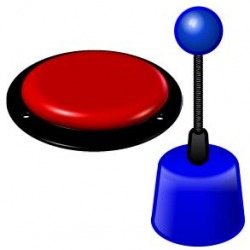
Novice Learners will likely have little or no awareness of what a switch is or what it can do. Thus, there may be little or no motivation for them to interact with a switch when it is presented for the first time. Furthermore, for some individuals, their physical ability may (severely) restrict switch access. Thus, the first step is to make a decision as to which of the plethora of available switches may best suit a particular Learner. This decision is always something of a ‘best guess’. However, as your experience grows, you will find that you have a good idea what might work best. You may, for example, have successfully used a switch in the past with an individual who had similarities to your present Learner. You may decide to try your present Learner therefore with the same switch.
The following may have some impact on the consideration of the choice of a suitable switch (in no particular order):
- Physical ability of the Learner: will s/he be able to access it?
- What part of the body will be used to access the switch (it does not have to be hands)?
- Positioning of the switch.
- Mounting the Switch;
- Goal of switch: this may change with skill development;
- Type of switch;
- Colour of switch;
- Size of switch;
- Shape of switch;
- Switch texture;
- Number of switches to be used;
- Cost of switch (some specialized types of switches can be expensive).
While the initial objective for the Learner in relation to the switch may be as simple as encouraging Learner interaction, the switch selected may not be the best for this task. We may find that the Learner ignores the switch or, presently, finds physical access difficult. Thus, we might start with a different type of switch (or modify the existing switch) with the aim of ‘progressing’ to our selected switch type at some future stage. While, it would be desirable to use the same switch throughout, it is not always necessary.
If you still have no idea which switch may be suitable for your Learner and do not know who to ask (you can always ask me for advice using the form below), the most versatile switch that can be used in most instances is probably the Jelly Bean from AbleNet. The Jelly Bean comes in three sizes: small medium and large (strictly speaking the Jelly Bean is the medium size switch). Where a Learner may have problems targetting a switch with any part of his/her body a larger switch may be a better choice (it is not always the case however). All the Jelly Bean type switches come with interchangeable switch tops providing four colours: red, green, blue and yellow. I would recommend beginning with a Jelly Bean switch if you do not know what switch will work. They are very robust, guaranteed for life, easy to use and not expensive. There are many switches that are very similar in design to the Jelly Bean. Any of these will do equally as well, although they may not be as robust or have a life time guarantee. The other switch I recommend is the wobble switch from Unlimiter. This switch comprises a circular base unit from which sprouts a spring which is capped with a small plastic ball. Hitting the ball in any direction will activate the switch.
We may modify the switch in some way to make it more interesting to the novice learner. We can remove the modification later, if desirable. Modifications to switches include adding textures (unless we obtain a switch that already has a texture) or embellishing the switch in some way (See the section on switch awareness below) .
Switch textures can be easily achieved by modifying the switch cap rather than the switch itself. Big Red, Jelly Beans, and Access Switches are available with switch caps. Spray the surface of the switch cap with glue through a circular template and then sprinkle (or otherwise attach) the desired surface to the cap. In reality, it does not really matter what texture is used as long as:
- it is safe and does not cause injury to the Learner;
- it is used consistently;
- it can be cleaned;
- it can be ‘sensed’ by the Learner (little point otherwise!);
Stage 2: Developing Switch Awareness

The next step is to develop an awareness of and a tolerance for the chosen switch. It has already been noted that it is possible to add a texture to a switch’s surface. The texture could help provide additional haptic input for the Learner and thus increase switch awareness.
NOTE: Switch, in the singular form, is used advisedly. While the goal may be to work eventually with multiple switches, don’t be tempted to start in that way. Keep it simple!
While the Learner may not be switch aware, or may ‘choose’ not to interact with the switch as selected, there may be something with which the Learner already interacts. For example, the Learner might have a fondness for teddy bears. If a small teddy can be adapted so that the stick part of a wobble switch will fit up inside its body (ouch!) (in such a way that it is not easily pulled off) then, a plain wobble switch can be made more motivating. In this way, a reluctant Learner, may reach out and interact with the teddy and, at one and the same time, activate the switch.
The Learner just pushes the switch away and is intolerant of it.
Great! If the Learner pushes it away, s/he is aware of its presence: progress has already been made! Furthermore, if the switch is
mounted sturdily and thus, secure in its position, the Learner’s action will activate the switch!
Yes, the Learner’s action activates the switch but s/he is becoming distraught at its presence.
It is important that the switch activates something that is going to be highly motivating (for the Learner). While the Learner may
make no connection with reaching out and touching the teddy bear with the sound of a piece of favourite music that follows, if,
every time the bear is accessed, the same response occurs, then there is every chance that the Learner will begin to make a
connection. What is needed (on the end of the switch) is the Best Thing In The World (for the Learner).
"In some cases it will be difficult to find things or activities that are interesting for the individual. When this is the case
then measures must be taken to improve the situation: in such instances teaching should begin by creating interest
and awareness." (Von Tetzchner S. & Martinsen H. 1992a)
What is the Best Thing In The World?
It will be different for each individual but it will be a POLE – Person, Object, Location or Event. Is it possible to put all the elements
of a POLE on the end of a switch? The simple answer is yes! Even a person! If the person is available during the Learner’s interaction
with the switch, the switch can be attached to a BIGmack (or similar) that is programmed to call the person’s name. As the name is
called (through the activation of the switch) so the person appears and interacts with the Learner for a short amount of time. It is
important that the interaction itself prevents the Learner from further access to the switch until the person has terminated the
interaction and left the Learner alone again. The length of the interaction should be kept short (perhaps a couple of minutes only).
The person should leave saying ‘if you want me, call me!’ and point to the switch and the BIGmack.
That’s no good! We haven’t got a person who is available to do that. It is mum who is the favoured person and she isn’t in school.
It is possible to put images of the favoured person into a simple PowerPoint presentation (for example) and, on each activation of the
switch, a (different) picture of the person appears on the computer screen with an accompanying sound (for example the person
saying ‘hello’ to the Learner.)
The Best Thing in the World for Sally is going outside in the garden, how can we put that on the end of a switch?
If a switch is attached to a BIGmack (or similar), it can request the provision of a ‘place’: “Garden please”. In this instance,
a member of staff must be on hand to take Sally a walk once around the game before bringing her back and placing her in exactly
the same relationship with the switch as she was before (if the switch is not wheelchair mounted).
Don’t be silly, we haven’t got the staff to do that!
Then, do it while staff are available and do something else while staff are not available. Never leave a Learner with a switch that makes
a request for a POLE that cannot be supplied. Obviously, some POLE items are easier to provide than others: playing a favourite
piece of music can be achieved repeatedly through switch use without any interaction from a Significant Other (other than the original
setup).
Sometimes switch awareness may be a bit of trial and error. A red switch may provide more response than a blue switch for example and yet everyone thought that blue was the Learner’s preferred colour.
Discovering the ‘right’ switch and mounting it securely in the correct position is an art in itself. However, once established, it is a platform on which further learning may be built and the Learner may progress.
Objective 1: The Learner will look at the switch when it is presented.
Objective 2: The Learner will tolerate the switch in his/her personal space.
Objective 3: The Learner will reach out and attempt to touch the switch;
Objective 4: The Learner is able to activate the switch (to create an effect).
It should be noted that there is, as yet, no claim being made that the Learner is making a connection between the switch and the POLE. No claim is made of understanding: we are simply establishing the switch’s presence with the Learner.
Don’t be stupid: this Learner has a GSCE in astrophysics. He understands the switch is controlling the pole. He’s a bright fellow.
We are not saying that all Learners will be unaware of connections between switch and POLE. We are saying that we need to
establish that this is the truth and not just an assumption on our part. Be wary of making early claims that are not justified.
Another question springs to mind: Just how did this Learner obtain a GCSE in astrophysics without a switch?!
NOTE: Switch, in the singular form, is used advisedly. While the goal may be to work eventually with multiple switches, don’t be tempted to start in that way. Keep it simple!
While the Learner may not be switch aware, or may ‘choose’ not to interact with the switch as selected, there may be something with which the Learner already interacts. For example, the Learner might have a fondness for teddy bears. If a small teddy can be adapted so that the stick part of a wobble switch will fit up inside its body (ouch!) (in such a way that it is not easily pulled off) then, a plain wobble switch can be made more motivating. In this way, a reluctant Learner, may reach out and interact with the teddy and, at one and the same time, activate the switch.
The Learner just pushes the switch away and is intolerant of it.
Great! If the Learner pushes it away, s/he is aware of its presence: progress has already been made! Furthermore, if the switch is
mounted sturdily and thus, secure in its position, the Learner’s action will activate the switch!
Yes, the Learner’s action activates the switch but s/he is becoming distraught at its presence.
It is important that the switch activates something that is going to be highly motivating (for the Learner). While the Learner may
make no connection with reaching out and touching the teddy bear with the sound of a piece of favourite music that follows, if,
every time the bear is accessed, the same response occurs, then there is every chance that the Learner will begin to make a
connection. What is needed (on the end of the switch) is the Best Thing In The World (for the Learner).
"In some cases it will be difficult to find things or activities that are interesting for the individual. When this is the case
then measures must be taken to improve the situation: in such instances teaching should begin by creating interest
and awareness." (Von Tetzchner S. & Martinsen H. 1992a)
What is the Best Thing In The World?
It will be different for each individual but it will be a POLE – Person, Object, Location or Event. Is it possible to put all the elements
of a POLE on the end of a switch? The simple answer is yes! Even a person! If the person is available during the Learner’s interaction
with the switch, the switch can be attached to a BIGmack (or similar) that is programmed to call the person’s name. As the name is
called (through the activation of the switch) so the person appears and interacts with the Learner for a short amount of time. It is
important that the interaction itself prevents the Learner from further access to the switch until the person has terminated the
interaction and left the Learner alone again. The length of the interaction should be kept short (perhaps a couple of minutes only).
The person should leave saying ‘if you want me, call me!’ and point to the switch and the BIGmack.
That’s no good! We haven’t got a person who is available to do that. It is mum who is the favoured person and she isn’t in school.
It is possible to put images of the favoured person into a simple PowerPoint presentation (for example) and, on each activation of the
switch, a (different) picture of the person appears on the computer screen with an accompanying sound (for example the person
saying ‘hello’ to the Learner.)
The Best Thing in the World for Sally is going outside in the garden, how can we put that on the end of a switch?
If a switch is attached to a BIGmack (or similar), it can request the provision of a ‘place’: “Garden please”. In this instance,
a member of staff must be on hand to take Sally a walk once around the game before bringing her back and placing her in exactly
the same relationship with the switch as she was before (if the switch is not wheelchair mounted).
Don’t be silly, we haven’t got the staff to do that!
Then, do it while staff are available and do something else while staff are not available. Never leave a Learner with a switch that makes
a request for a POLE that cannot be supplied. Obviously, some POLE items are easier to provide than others: playing a favourite
piece of music can be achieved repeatedly through switch use without any interaction from a Significant Other (other than the original
setup).
Sometimes switch awareness may be a bit of trial and error. A red switch may provide more response than a blue switch for example and yet everyone thought that blue was the Learner’s preferred colour.
Discovering the ‘right’ switch and mounting it securely in the correct position is an art in itself. However, once established, it is a platform on which further learning may be built and the Learner may progress.
Objective 1: The Learner will look at the switch when it is presented.
Objective 2: The Learner will tolerate the switch in his/her personal space.
Objective 3: The Learner will reach out and attempt to touch the switch;
Objective 4: The Learner is able to activate the switch (to create an effect).
It should be noted that there is, as yet, no claim being made that the Learner is making a connection between the switch and the POLE. No claim is made of understanding: we are simply establishing the switch’s presence with the Learner.
Don’t be stupid: this Learner has a GSCE in astrophysics. He understands the switch is controlling the pole. He’s a bright fellow.
We are not saying that all Learners will be unaware of connections between switch and POLE. We are saying that we need to
establish that this is the truth and not just an assumption on our part. Be wary of making early claims that are not justified.
Another question springs to mind: Just how did this Learner obtain a GCSE in astrophysics without a switch?!
Stage 3: Switch accessibility

NOTE: Part of this section is so tied into ‘2’ above that it is very difficult to separate them.
In order to activate a switch, it has to be in the Learner's reach; positioned not too far away or too near, not too high or too low. The switch must be firmly mounted so that it does not move when accessed. Even with the switch in the optimum position, in order to activate the chosen switch, the Learner has to make some form of contact with it. This will require some physical effort and control over some part of the Learner’s body. While some switches only require the minimum of movement, there are many that require the Learner to move a limb (for example) to press (or otherwise move)(some switches will operate on the release of the switch surface) a part of a switch. The Learner has to be able to target the switch, move his/her hand (or other body part) to the switch accurately and activate it by pressing or releasing (or other action). The range of objectives for this stage will vary considerably therefore, depending upon the type of switch in use and the physical abilities of the Learner.
Do not be tempted to move too far, too quickly at this stage. For example:
- do not introduce two switches;
- do not introduce scanning;
- do not introduce a timing factor.
The activation of a single switch at any time should cause a POLE (Person, Object, Location, Event) event. The POLE event in question, as has been outlined earlier, should be highly motivating for the Learner (the Best Thing In The World), such that there is a good chance that the Learner will want to cause the POLE event to occur again (and again). It is therefore important that a balance be struck between:
- making the event too long such that frequent repetitions of switch interaction are less likely;
- making the event too short such that the Learner is less aware and is less motivated.
All this assumes that the Learner 'understands' that it is his/her action on the switch that is causing the POLE event (Cause and Effect). The Learner may have no such understanding. However, if, everytime that s/he activates the switch (even accidentally) the POLE event repeats then the Learner may come to make the connection (see Cause and Effect below) between the switch and the action of the POLE.
The objectives for Stage Three are:
Objective 3: The Learner will reach out and attempt to touch the switch.
Objective 4: The Learner is able to activate the switch (to create an effect).
Objective 5: The Learner will remove his/her hand (other) from the switch afteractivation is made.
Objective 6: The Learner will activate the switch once for each POLE event.
As you can see, Objectives 3 and 4 are repeated in this section as it is tied to item 2 detailed earlier. However, Objectives 5 and 6 draw our attention to further problems concerning removal of the hand (other) from the switch. There are a number of possible issues here:
- The Learner can activate the switch but cannot remove his hand from the switch so that it is being continually activated.
This may not matter initially depending on the POLE event. A BIGmack will only play its message once and stop until the
switch is released and activated once again, for example. However, the yapping dog will continue to yap until the switch is
released. This may not be a problem: the Learner may eventually release the switch by accident or the switch may be
connected to the POLE event by some ‘timing interface’ that will override any continual activation. It becomes a problem if the
yapping dog falls off the table each time and requires a continual staff presence or the Learner cannot get his/her hand off the
switch in order to make the next activation!
- The Learner continues to activate the switch repeatedly over and over again with little reference to the POLE event.
- The Learner moves the switch as it is accessed making it less accessible with each activation.
While these are indeed issues, we should not forget that the Learner has taken a step forward in interacting with the switch and, as such, progress has been made. Furthermore, such issues can be resolved:
- An inability to remove a hand or other body part from a switch is only a problem of switch orientation. While the switch is
positioned such that the Learner has to place his/her hand on (top of) it to make an activation, there will nearly always be a
problem. If the switch is mounted upside-down, slightly above the Learner’s hand, such that s/he has to raise her/his hand
(only slightly) to create the activation, gravity will release the Learner’s hand from the switch after the activation has been made.
- Repeated activations of the switch need not be a problem at this stage of development although they will need to be tackled at
some later point. We need to ask ourselves ‘why?’. Why is the Learner activating the switch over and over? What is motivating
about doing that? Can we remove such motivation without removing the POLE? Are there ways of training a Learner to stop
repeated interactions? The answer to the latter is ‘Yes’. Discussed below.
- Movement of the switch signifies that it is incorrectly mounted. We should not try to teach the Learner to be gentler in the
switch interaction rather, make the switch mount more robust.
An inability to remove a hand (other) from a switch is NOT a failing of the Learner but, rather, a failing of the tutor. It indicates that our original decision for the switch position was likely incorrect and that we need to re-evaluate the orientation and/or spatial position of the switch. (and perhaps the switch type itself).
Ensuring the best position of a switch may involve a multi-disciplinary process with advice from a Physiotherapist and an Occupational Therapist. However, a word of caution! The Physio or the OT may have additional objectives in mind: they may want to position a switch to exercise a particular body part or correct an incorrect posture. While, these will undoubtedly be laudable objectives, your objective is to make the switch as easy as possible to target for the Learner and, as such, this might conflict.
There are many switch mounting systems on the market some more robust than others. It will become obvious if the switch is mounted poorly as it will create access problems: it is clearly better to provide the ‘appropriate’ switch mounting solution from day one.
Not only might the mounting system move but also there may be changes in the Learner and the Learner’s positioning. Younger learners tend to grow and their bodies change in size and often in physical ability. Some learners gain function and some loose function. Wheelchairs may be adapted or swapped completely; a new head rest or a new type of wheelchair tray may be purchased. The addition of a wheelchair pommel, for example, can prevent the once functional use of a knee-activated switch. It follows that both the mounting system and Learner switch access need regular monitoring and review. How regular? That is impossible to generalise but, as a rule, it should be at least termly.
Unwanted repeated switch actions can be addressed through, at least, four techniques: Access, Blocking, Changing, and Differential reinforcement. While, there is no guarantee that any will produce the desired result, it is our experience, that the latter is the most successful. These techniques are addressed fully in the TalkSense Switching To Communication course. Each is detailed, in brief, below:
Access – Change a component of the Learner’s access to the switch: perhaps the switch angle or the switch position, such that
the switch becomes slightly more difficult to access. Does this have an effect on repeated activations?
Blocking – Block access to the switch when switch activations are inappropriate. Either remove the switch or put something
between the Learner and the switch. This will stop repeat activations. However, when the blocking stops, does the
Learner return to repeated activation?
Changing – What is it about the switch that causes the Learner to want to activate repeatedly? Is it the click? Then use a ‘clickless’
switch. Is it the colour? Then change the colour. Is the feel? Then change the feel. Is it the shape? Then change the
shape … Do any of the these have any impact on repeated activations?
Differential – It is possible to set up a PowerPoint presentation such that it will ignore repeated switch activations and only activate
Reinforcement (play music, show a video, display a picture …) when the switch activations cease. Thus, you can leave the Learner
activating the switch over and over. Eventually, the Learner tires and stops activating the switch and PowerPoint is
activated! The Learner perks up and probably will start to activate the switch, once again, over and over. PowerPoint
appears to stop and nothing happens until, once again, the Learner ceases to activate the switch. This should take a
lesser time than previously. Eventually, the Learner comes to ‘realise’ that only when s/he does not repeatedly activate
the switch that the reward appears within PowerPoint.
In order to activate a switch, it has to be in the Learner's reach; positioned not too far away or too near, not too high or too low. The switch must be firmly mounted so that it does not move when accessed. Even with the switch in the optimum position, in order to activate the chosen switch, the Learner has to make some form of contact with it. This will require some physical effort and control over some part of the Learner’s body. While some switches only require the minimum of movement, there are many that require the Learner to move a limb (for example) to press (or otherwise move)(some switches will operate on the release of the switch surface) a part of a switch. The Learner has to be able to target the switch, move his/her hand (or other body part) to the switch accurately and activate it by pressing or releasing (or other action). The range of objectives for this stage will vary considerably therefore, depending upon the type of switch in use and the physical abilities of the Learner.
Do not be tempted to move too far, too quickly at this stage. For example:
- do not introduce two switches;
- do not introduce scanning;
- do not introduce a timing factor.
The activation of a single switch at any time should cause a POLE (Person, Object, Location, Event) event. The POLE event in question, as has been outlined earlier, should be highly motivating for the Learner (the Best Thing In The World), such that there is a good chance that the Learner will want to cause the POLE event to occur again (and again). It is therefore important that a balance be struck between:
- making the event too long such that frequent repetitions of switch interaction are less likely;
- making the event too short such that the Learner is less aware and is less motivated.
All this assumes that the Learner 'understands' that it is his/her action on the switch that is causing the POLE event (Cause and Effect). The Learner may have no such understanding. However, if, everytime that s/he activates the switch (even accidentally) the POLE event repeats then the Learner may come to make the connection (see Cause and Effect below) between the switch and the action of the POLE.
The objectives for Stage Three are:
Objective 3: The Learner will reach out and attempt to touch the switch.
Objective 4: The Learner is able to activate the switch (to create an effect).
Objective 5: The Learner will remove his/her hand (other) from the switch afteractivation is made.
Objective 6: The Learner will activate the switch once for each POLE event.
As you can see, Objectives 3 and 4 are repeated in this section as it is tied to item 2 detailed earlier. However, Objectives 5 and 6 draw our attention to further problems concerning removal of the hand (other) from the switch. There are a number of possible issues here:
- The Learner can activate the switch but cannot remove his hand from the switch so that it is being continually activated.
This may not matter initially depending on the POLE event. A BIGmack will only play its message once and stop until the
switch is released and activated once again, for example. However, the yapping dog will continue to yap until the switch is
released. This may not be a problem: the Learner may eventually release the switch by accident or the switch may be
connected to the POLE event by some ‘timing interface’ that will override any continual activation. It becomes a problem if the
yapping dog falls off the table each time and requires a continual staff presence or the Learner cannot get his/her hand off the
switch in order to make the next activation!
- The Learner continues to activate the switch repeatedly over and over again with little reference to the POLE event.
- The Learner moves the switch as it is accessed making it less accessible with each activation.
While these are indeed issues, we should not forget that the Learner has taken a step forward in interacting with the switch and, as such, progress has been made. Furthermore, such issues can be resolved:
- An inability to remove a hand or other body part from a switch is only a problem of switch orientation. While the switch is
positioned such that the Learner has to place his/her hand on (top of) it to make an activation, there will nearly always be a
problem. If the switch is mounted upside-down, slightly above the Learner’s hand, such that s/he has to raise her/his hand
(only slightly) to create the activation, gravity will release the Learner’s hand from the switch after the activation has been made.
- Repeated activations of the switch need not be a problem at this stage of development although they will need to be tackled at
some later point. We need to ask ourselves ‘why?’. Why is the Learner activating the switch over and over? What is motivating
about doing that? Can we remove such motivation without removing the POLE? Are there ways of training a Learner to stop
repeated interactions? The answer to the latter is ‘Yes’. Discussed below.
- Movement of the switch signifies that it is incorrectly mounted. We should not try to teach the Learner to be gentler in the
switch interaction rather, make the switch mount more robust.
An inability to remove a hand (other) from a switch is NOT a failing of the Learner but, rather, a failing of the tutor. It indicates that our original decision for the switch position was likely incorrect and that we need to re-evaluate the orientation and/or spatial position of the switch. (and perhaps the switch type itself).
Ensuring the best position of a switch may involve a multi-disciplinary process with advice from a Physiotherapist and an Occupational Therapist. However, a word of caution! The Physio or the OT may have additional objectives in mind: they may want to position a switch to exercise a particular body part or correct an incorrect posture. While, these will undoubtedly be laudable objectives, your objective is to make the switch as easy as possible to target for the Learner and, as such, this might conflict.
There are many switch mounting systems on the market some more robust than others. It will become obvious if the switch is mounted poorly as it will create access problems: it is clearly better to provide the ‘appropriate’ switch mounting solution from day one.
Not only might the mounting system move but also there may be changes in the Learner and the Learner’s positioning. Younger learners tend to grow and their bodies change in size and often in physical ability. Some learners gain function and some loose function. Wheelchairs may be adapted or swapped completely; a new head rest or a new type of wheelchair tray may be purchased. The addition of a wheelchair pommel, for example, can prevent the once functional use of a knee-activated switch. It follows that both the mounting system and Learner switch access need regular monitoring and review. How regular? That is impossible to generalise but, as a rule, it should be at least termly.
Unwanted repeated switch actions can be addressed through, at least, four techniques: Access, Blocking, Changing, and Differential reinforcement. While, there is no guarantee that any will produce the desired result, it is our experience, that the latter is the most successful. These techniques are addressed fully in the TalkSense Switching To Communication course. Each is detailed, in brief, below:
Access – Change a component of the Learner’s access to the switch: perhaps the switch angle or the switch position, such that
the switch becomes slightly more difficult to access. Does this have an effect on repeated activations?
Blocking – Block access to the switch when switch activations are inappropriate. Either remove the switch or put something
between the Learner and the switch. This will stop repeat activations. However, when the blocking stops, does the
Learner return to repeated activation?
Changing – What is it about the switch that causes the Learner to want to activate repeatedly? Is it the click? Then use a ‘clickless’
switch. Is it the colour? Then change the colour. Is the feel? Then change the feel. Is it the shape? Then change the
shape … Do any of the these have any impact on repeated activations?
Differential – It is possible to set up a PowerPoint presentation such that it will ignore repeated switch activations and only activate
Reinforcement (play music, show a video, display a picture …) when the switch activations cease. Thus, you can leave the Learner
activating the switch over and over. Eventually, the Learner tires and stops activating the switch and PowerPoint is
activated! The Learner perks up and probably will start to activate the switch, once again, over and over. PowerPoint
appears to stop and nothing happens until, once again, the Learner ceases to activate the switch. This should take a
lesser time than previously. Eventually, the Learner comes to ‘realise’ that only when s/he does not repeatedly activate
the switch that the reward appears within PowerPoint.
Stage 4: Cause and Effect
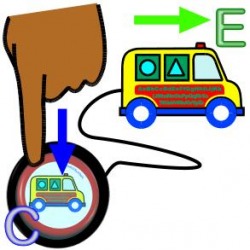
A cause is the reason something happens. An effect is that which happens as a result. If A causes B, we may or may not realise it depending on the circumstances and our level of understanding. We 'know' that sunburn is the effect caused by staying out in the sun for too long without adequate protection. There must have been a point in history when mankind made this connection. At some point, someone must have made the connection between walking out in the sun without clothing and the sore sensation that followed. However, if our cognitive capacity is severely diminished then we may have great difficulty in making such a connection.
In order that we might make sense of the world we experience there are a number of developmental milestones that we must reach and pass. One of these is the concept of Cause and Effect. For more on Cause and Effect click on the C&E symbol to the left.
Once we know that the Learner is able to access the switch, it is necessary to establish that the Learner has Cause and Effect cognition. It cannot be claimed, simply because the switch is activated and the yapping dog moves, that the Learner has understood the connection: the Learner’s understanding must be made explicit. There are a number of criteria that, if met, would tend to suggest that the Learner has established cause and effect:
- The Learner tries to activate the switch only when the POLE event has terminated;
- The Learner keeps attempting to activate the switch until successful and then ceases all attempts until the POLE event
terminates;
- The Learner goes out of his/her way to operate the switch and then, once successful, stops;
- Observation of consistent use over time (days, perhaps weeks) with different POLES in different settings demonstrates that
the Learner has the concept of Cause and Effect.
- All other explanations for the Learner’s behaviour have been eliminated.
Ensure that the sole explanation for the observed behaviour is the Cause and Effect skill sought. It is very easy to be fooled and make the assumption that the Learner has C&E when, in fact, there is an alternative explanation.
How do we establish C&E? What we are doing is consistently pairing an action (activating the switch) with an event (the POLE). It is hoped that, after a period of time (which will vary from Learner to Learner), the Learner will come to realise (eureka!) the action of the switch is causing the POLE event. It is also hoped that the Learner will come to the realisation that s/he has the power to control his/her environment in this fashion.
Objective 7: The Learner activates the switch only when the POLE event has terminated.
Objective 8: The Learner continues in the attempt to reach the switch and thenceases when the switch is activated and the
POLE event is enabled.
Objective 9: The Learner demonstrates awareness of Cause and Effect consistently over X days, in Y environments with Z different
POLE Events.
In order that we might make sense of the world we experience there are a number of developmental milestones that we must reach and pass. One of these is the concept of Cause and Effect. For more on Cause and Effect click on the C&E symbol to the left.
Once we know that the Learner is able to access the switch, it is necessary to establish that the Learner has Cause and Effect cognition. It cannot be claimed, simply because the switch is activated and the yapping dog moves, that the Learner has understood the connection: the Learner’s understanding must be made explicit. There are a number of criteria that, if met, would tend to suggest that the Learner has established cause and effect:
- The Learner tries to activate the switch only when the POLE event has terminated;
- The Learner keeps attempting to activate the switch until successful and then ceases all attempts until the POLE event
terminates;
- The Learner goes out of his/her way to operate the switch and then, once successful, stops;
- Observation of consistent use over time (days, perhaps weeks) with different POLES in different settings demonstrates that
the Learner has the concept of Cause and Effect.
- All other explanations for the Learner’s behaviour have been eliminated.
Ensure that the sole explanation for the observed behaviour is the Cause and Effect skill sought. It is very easy to be fooled and make the assumption that the Learner has C&E when, in fact, there is an alternative explanation.
How do we establish C&E? What we are doing is consistently pairing an action (activating the switch) with an event (the POLE). It is hoped that, after a period of time (which will vary from Learner to Learner), the Learner will come to realise (eureka!) the action of the switch is causing the POLE event. It is also hoped that the Learner will come to the realisation that s/he has the power to control his/her environment in this fashion.
Objective 7: The Learner activates the switch only when the POLE event has terminated.
Objective 8: The Learner continues in the attempt to reach the switch and thenceases when the switch is activated and the
POLE event is enabled.
Objective 9: The Learner demonstrates awareness of Cause and Effect consistently over X days, in Y environments with Z different
POLE Events.
Stage 5: Timing Switch Access

There are instances where a Learner may have to access a switch in a specified time frame. This is particularly true for Learners who will be using a form of (computerized) scanning that is partially automated. Simply put, whilst scanning, a variety of options are presented to the Learner one by one. As the scan reaches and presents the required option, the Learner’s task is to activate the switch and make the selection before the scan moves on. In nearly all instances, the scan rate can be altered to suit the ability of the Learner. Some Learners have a variable rate of access, sometimes getting excited and taking longer than normal. In this instance, timing has to be set to allow for the variety of access speeds.
If the Learner is only ever going to use a system that doesn't require automated scanning (for example: single switch direct activation, multiple switch direct activation, or two switch step scanning), timing of switch activation is not as crucial. In the majority of instances nothing will happen until the Learner makes an activation: as there is no automated scan and, thus, the system is slave to the Learner. However, one can envisage instances where timing is more important even to such a Learner: for example, if s/he was playing some game with a peer (or against a computer). Think of the old space invaders game, for example: the switch must be activated so that the gun can fire at the descending aliens when the alien aligns with the gun. Timing is a vital element. Therefore, while timing is less crucial for Learners working mainly with non-automated scans, it is not completely unimportant in every instance.
There are a number of ways to help a Learner develop such timing skills. We can begin away from switches altogether: or example, in making a choice in school, the choice items can be presented at a constant rate by a facilitator, one by one, until the Learner indicates a choice.
“Do you want orange Juice?” … SHOW ORANGE & PAUSE
“Do you want apple Juice?” … SHOW APPLE & PAUSE
“Do you want blackcurrant Juice?” … SHOW BLACKCURRANT & PAUSE
Return to beginning
Where the pause is governed by the Learner’s ability to respond in a specific time. We can use real life drinks, the actual fruit, photographs of the drinks (or the fruits), or symbols for the drinks (as seen below). However, we should not assume that every Learner will have knowledge that orange juice comes from oranges and apple juices from apples ... and therefore the actual drinks or symbols for the actual drinks may be a better option.
If the Learner is only ever going to use a system that doesn't require automated scanning (for example: single switch direct activation, multiple switch direct activation, or two switch step scanning), timing of switch activation is not as crucial. In the majority of instances nothing will happen until the Learner makes an activation: as there is no automated scan and, thus, the system is slave to the Learner. However, one can envisage instances where timing is more important even to such a Learner: for example, if s/he was playing some game with a peer (or against a computer). Think of the old space invaders game, for example: the switch must be activated so that the gun can fire at the descending aliens when the alien aligns with the gun. Timing is a vital element. Therefore, while timing is less crucial for Learners working mainly with non-automated scans, it is not completely unimportant in every instance.
There are a number of ways to help a Learner develop such timing skills. We can begin away from switches altogether: or example, in making a choice in school, the choice items can be presented at a constant rate by a facilitator, one by one, until the Learner indicates a choice.
“Do you want orange Juice?” … SHOW ORANGE & PAUSE
“Do you want apple Juice?” … SHOW APPLE & PAUSE
“Do you want blackcurrant Juice?” … SHOW BLACKCURRANT & PAUSE
Return to beginning
Where the pause is governed by the Learner’s ability to respond in a specific time. We can use real life drinks, the actual fruit, photographs of the drinks (or the fruits), or symbols for the drinks (as seen below). However, we should not assume that every Learner will have knowledge that orange juice comes from oranges and apple juices from apples ... and therefore the actual drinks or symbols for the actual drinks may be a better option.
There are, at least, two possibilities in the above example: the items are displayed one at a time and hidden away at other times OR the items are displayed in a row at the same time and the facilitator points to each to indicate the item currently being selected. The advantage to these approaches is that we can vary the time taken between presentations to suit individual need at any specific moment. Thus, if the Learner were suddenly to start coughing, we could halt the presentation until the coughing has ceased and then continue. In order to train the Learner to activate a switch to indicate a choice, a swtch should be attached to a BIGmack that is programmed to say "Yes" or "That one" or "That's the one I want" or something similar. Of course, the Learner could simply indicate 'yes' through a gesture or facial expression BUT that does not introduce the Learner to switch use.
There are a number of computer programs that will also offer some form of simple timed scanning option. Some are better than others but, as new ones are entering the market almost every week, it would be unwise to single out any particular program. It is also possible to create your own scanning access programs in PowerPoint: it is not complicated, each piece of the process is very simple.
There are a number of computer programs that will also offer some form of simple timed scanning option. Some are better than others but, as new ones are entering the market almost every week, it would be unwise to single out any particular program. It is also possible to create your own scanning access programs in PowerPoint: it is not complicated, each piece of the process is very simple.
The above is a copy of a scanning PowerPoint I created featuring the three example drinks choices above. It took about ten minutes to produce. The original PowerPoint version also speaks each drink name in turn (There is no sound in the example above) and continually loops through the three choices until the Learner selects an option with a switch. It is NOT complicated to do... why not book a PowerPoint training course and find out for yourself?
Apart from using PowerPoint, there are also devices that allow for scanning training. The FL4SH unit from AbleNet, for example, used to allow (it is no longer available) the activation of a POLE event on the selection of a particular cell from a group of four.
PLEASE NOTE: The FL4SH system appears to be no longer available as a product from AbleNet. That is a great shame. However, the principles embodied in the FL4SH unit are what is important: if other systems currently available (these will change over time) offer similar (if not even better features) then it will be a good system with which to teach scanning.
The FL4SH unit was specifically designed for scanning training and offers a really bright outline scan of each of the possible four items. Of course, you do not need to start with all four positions occupied. It may be better to start with one (favourite) item and three blanks such that the Learner is gradually eased in to the scanning process. More on this later.
Thus, we can envisage a set of objectives that cover aspects of time in addition to space. Objectives in which the Learner is required to access a switch on command or on an external prompt. The following objectives may not be applicable to all Learners:
Objective 10: The Learner will activate the switch within X seconds of being instructed by a Significant Other
Objective 11: The Learner will activate the switch appropriately in response to an automatic scanning mechanism
Objective 12: The Learner will operate the switch in response to and anticipation of a POLE event.
There is a rather big problem with some of what has been suggested however. Consider a scan through apple juice, orange pop, and a banana shake. The scan proceeds and, at some point, the Learner activates the switch to indicate a choice. The choice was banana. What are we to assume?
- The Learner knows how to operate a switch in time?
- The Learner has made a choice?
- The Learner understands 'banana'?
- The Learner is coping with scanning?
- All of the above
- None of the above
Actually, we can assume 'none of the above'. The Learner may have:
- simply hit the switch by accident;
- on noticing the shiny thing in front of him/her, reached out for it;
- been intending to go for apple but the scan was too fast and s/he missed it by a way;
- been intending to go for the (following) 'apple' but had come in too early;
- fly swatted the switch because it was there.
some of these indicate that the Learner is not understanding the concept of timing and did not made a conscious choice for a banana shake but rather got there by way of accident. However, as the Learner actually likes Banana shakes (indeed likes all three items) s/he does not complain when s/he gets a drink. The staff assume that the Learner has made a conscious choice and has been successful in the use of a switch and in scanning. None of these things may actually be true! Rather than claiming a Learner's understanding, staff should state they are TEACHING the Learner that a slection made in such a manner is what they will get ... choose banana ... get banana, choose orange ... get orange. However, if we want to assess the level of a Learner's understanding of the concepts involved, it is necessary to approach the Learner's switch choice in a different way.
In order to assess a Learner's level of understanding, we must ask a question to which we know the answer. Thus, in response to "which one is yellow?", 'orange' is incorrect. However, there is yet a problem with this approach! If I ask a question to which I know the answer, I can subconsciously give the Learner cues as to the correct response! Therefore, I need to ask a question where:
- there is a only one right answer
- I do not know the answer!
How can you ask a question when you do not know the answer? It's actually easier to do than it, at first, appears. I show a Learner a Banana: I hold it up, allow the Learner to smell it, to feel it, I say the name and then I replace it among the orange and the apple and move away. A second member of staff approaches, this staff member has not seen which fruit I picked out to show the Learner. The staff member asks the Learner to indicate which fruit s/he has been shown. Can the Learer pick out the banana? What does it mean if s/he picks out the apple instead?
- The Learner wants a drink of apple juice;
- The Learner simply forgot what was shown originally;
- The Learner knew it was banana but got the timing wrong;
- The Learner doesn't understand what is required;
- None of the above;
- Could be any of the above.
It actually tells us nothing. It could be any of the above. It does not mean that the Learner doesn't understand banana, or what is required. Failing to perform the task tells us nothing apart from the fact that the Learner did not perform the task. If we did ten such tasks and the Learner failed to get one correct it would still tell us nothing. However, on the other hand, if the Learner gets it correct, it tells us a lot! If the Learner gets it correct 8 out of ten times we would being to assume that s/he was cognizant of the choice and the scan and that the two incorrect answers were simply incorrect answers (we might assume a reason as to why two were incorrect but it would be an assumption - we would not know, from the range of possible reasons, why the Learner was incorrect). Therefore, it is better to concentrate on the positive than than the negative! We coud hypothesise a possible reason for an incorrect response and make an adjustment to our methodology and re-test to see if it had an effect but, even if it did, there would be no guarantee that this was the reason for the initial incorrect responses.
Thus:
- I ask the Learner to pick out the APPLE and to tell another member of staff this choice;
- I ask the other member of staff to watch and see what is selected;
- BUT do not inform the member of staff which one I asked the learner to pick out.
If the Learner produces a correct selection, either it was a complete fluke or the Learner has the necessary skills. Repeated trials will eliminate the possibility of a fluke.
Yes but my Learner forgets the one I picked out. That does not mean he cannot do the task. No, as has already been stated, it doesn't but it tends to suggest it. However, there is a way to overcome the memory barrier. Find an old box and place a second, similar APPLE in the box such that the Learner can see it at all times BUT the assessing member of staff cannot. Now, memory is not an issue, the Learner’s task is to tell the staff member which of the three fruits s/he can see within the box.
In summary, scanning can begin without the use of a switch or any electronic system: items can be presented in a ‘scanning fashion’ from which the Learner may choose. Initially, we would advise a single item presentation scan …
Apple (hide apple), Orange (hide orange), Banana (hide Banana), Apple …
Then we can step one pace forward to a multi-presentation scan…
Apple, Orange, & Banana (on table top)
Point to each in turn saying ‘Do you want Apple (Orange, Banana)’
Vary length of time on each according to need of Learner.
Then, the next stage is to introduce a switch (if this hasn’t been already mastered). Once this has been successfully achieved, the Learner can be introduced to a single switch scan. A simple PowerPoint scan is a good way to begin: each activation of the switch moves to a new slide. Each new slide might show something that the Learner loves, combining music and pictures and even video. A few of slides should be boring however. The purpose of this is in the observation of the Learner’s use of the switch: Does the Learner access the switch quickly on the boring slides to move it on to something more exciting? Does the Learner remain on the exciting slides for longer (not activating the switch)? This would suggest an excellent grasp of switch use.
Following this, introduce some simple scanning system such as the FL4SH from AbleNet (or the 4Talk4 from P&G). Leaving all but one cell blank (to keep the task relatively simple), ask the Learner to activate the switch as the target cell is reached. If successful, the target cell should operate some ‘reward’ for the Learner’s achievement. (Note: The FL4SH unit has superior scanning lighting although the 4Talk4 has four output jacks to the FL4SH’s one). The target cell should contain something that the Learner will find very rewarding.
Gradually increasing the number of symbols on the FL4SH or the 4Talk4 makes the task a little more complex and, as such, demands more of the Learner. We can progress the Learner from a choice of one out of one (other areas blank) to a choice of one from four (all locations symbolized) as each stage is mastered.
Thus, we can envisage a set of objectives that cover aspects of time in addition to space. Objectives in which the Learner is required to access a switch on command or on an external prompt. The following objectives may not be applicable to all Learners:
Objective 10: The Learner will activate the switch within X seconds of being instructed by a Significant Other
Objective 11: The Learner will activate the switch appropriately in response to an automatic scanning mechanism
Objective 12: The Learner will operate the switch in response to and anticipation of a POLE event.
There is a rather big problem with some of what has been suggested however. Consider a scan through apple juice, orange pop, and a banana shake. The scan proceeds and, at some point, the Learner activates the switch to indicate a choice. The choice was banana. What are we to assume?
- The Learner knows how to operate a switch in time?
- The Learner has made a choice?
- The Learner understands 'banana'?
- The Learner is coping with scanning?
- All of the above
- None of the above
Actually, we can assume 'none of the above'. The Learner may have:
- simply hit the switch by accident;
- on noticing the shiny thing in front of him/her, reached out for it;
- been intending to go for apple but the scan was too fast and s/he missed it by a way;
- been intending to go for the (following) 'apple' but had come in too early;
- fly swatted the switch because it was there.
some of these indicate that the Learner is not understanding the concept of timing and did not made a conscious choice for a banana shake but rather got there by way of accident. However, as the Learner actually likes Banana shakes (indeed likes all three items) s/he does not complain when s/he gets a drink. The staff assume that the Learner has made a conscious choice and has been successful in the use of a switch and in scanning. None of these things may actually be true! Rather than claiming a Learner's understanding, staff should state they are TEACHING the Learner that a slection made in such a manner is what they will get ... choose banana ... get banana, choose orange ... get orange. However, if we want to assess the level of a Learner's understanding of the concepts involved, it is necessary to approach the Learner's switch choice in a different way.
In order to assess a Learner's level of understanding, we must ask a question to which we know the answer. Thus, in response to "which one is yellow?", 'orange' is incorrect. However, there is yet a problem with this approach! If I ask a question to which I know the answer, I can subconsciously give the Learner cues as to the correct response! Therefore, I need to ask a question where:
- there is a only one right answer
- I do not know the answer!
How can you ask a question when you do not know the answer? It's actually easier to do than it, at first, appears. I show a Learner a Banana: I hold it up, allow the Learner to smell it, to feel it, I say the name and then I replace it among the orange and the apple and move away. A second member of staff approaches, this staff member has not seen which fruit I picked out to show the Learner. The staff member asks the Learner to indicate which fruit s/he has been shown. Can the Learer pick out the banana? What does it mean if s/he picks out the apple instead?
- The Learner wants a drink of apple juice;
- The Learner simply forgot what was shown originally;
- The Learner knew it was banana but got the timing wrong;
- The Learner doesn't understand what is required;
- None of the above;
- Could be any of the above.
It actually tells us nothing. It could be any of the above. It does not mean that the Learner doesn't understand banana, or what is required. Failing to perform the task tells us nothing apart from the fact that the Learner did not perform the task. If we did ten such tasks and the Learner failed to get one correct it would still tell us nothing. However, on the other hand, if the Learner gets it correct, it tells us a lot! If the Learner gets it correct 8 out of ten times we would being to assume that s/he was cognizant of the choice and the scan and that the two incorrect answers were simply incorrect answers (we might assume a reason as to why two were incorrect but it would be an assumption - we would not know, from the range of possible reasons, why the Learner was incorrect). Therefore, it is better to concentrate on the positive than than the negative! We coud hypothesise a possible reason for an incorrect response and make an adjustment to our methodology and re-test to see if it had an effect but, even if it did, there would be no guarantee that this was the reason for the initial incorrect responses.
Thus:
- I ask the Learner to pick out the APPLE and to tell another member of staff this choice;
- I ask the other member of staff to watch and see what is selected;
- BUT do not inform the member of staff which one I asked the learner to pick out.
If the Learner produces a correct selection, either it was a complete fluke or the Learner has the necessary skills. Repeated trials will eliminate the possibility of a fluke.
Yes but my Learner forgets the one I picked out. That does not mean he cannot do the task. No, as has already been stated, it doesn't but it tends to suggest it. However, there is a way to overcome the memory barrier. Find an old box and place a second, similar APPLE in the box such that the Learner can see it at all times BUT the assessing member of staff cannot. Now, memory is not an issue, the Learner’s task is to tell the staff member which of the three fruits s/he can see within the box.
In summary, scanning can begin without the use of a switch or any electronic system: items can be presented in a ‘scanning fashion’ from which the Learner may choose. Initially, we would advise a single item presentation scan …
Apple (hide apple), Orange (hide orange), Banana (hide Banana), Apple …
Then we can step one pace forward to a multi-presentation scan…
Apple, Orange, & Banana (on table top)
Point to each in turn saying ‘Do you want Apple (Orange, Banana)’
Vary length of time on each according to need of Learner.
Then, the next stage is to introduce a switch (if this hasn’t been already mastered). Once this has been successfully achieved, the Learner can be introduced to a single switch scan. A simple PowerPoint scan is a good way to begin: each activation of the switch moves to a new slide. Each new slide might show something that the Learner loves, combining music and pictures and even video. A few of slides should be boring however. The purpose of this is in the observation of the Learner’s use of the switch: Does the Learner access the switch quickly on the boring slides to move it on to something more exciting? Does the Learner remain on the exciting slides for longer (not activating the switch)? This would suggest an excellent grasp of switch use.
Following this, introduce some simple scanning system such as the FL4SH from AbleNet (or the 4Talk4 from P&G). Leaving all but one cell blank (to keep the task relatively simple), ask the Learner to activate the switch as the target cell is reached. If successful, the target cell should operate some ‘reward’ for the Learner’s achievement. (Note: The FL4SH unit has superior scanning lighting although the 4Talk4 has four output jacks to the FL4SH’s one). The target cell should contain something that the Learner will find very rewarding.
Gradually increasing the number of symbols on the FL4SH or the 4Talk4 makes the task a little more complex and, as such, demands more of the Learner. We can progress the Learner from a choice of one out of one (other areas blank) to a choice of one from four (all locations symbolized) as each stage is mastered.
The above animated image depicts an early stage in using a FL4SH system with only one of the four avialale locations in use. That location depicts chocolate which is a particular motivator for this Learner. The scan proceeds automatically at a pre-selected rate and, if the learner can stop it on the 'chocolate location' (by activating the switch) the system says, "I want a piece of chocolate please". The Learner is rewarded with just half of a chocolate button!
The image below shows the same FL4SH unit, this time set up with four items in four locations. Again, the Learner is required to stop the scan on the chocolate symbol to obtain the reward. The scan can be set to announce each item as it reaches them. This is known as an auditory scan and is particularly useful for Learers with poorer visual acuity. You will note that the other three things have been chosen to be things that can be easily supplied, are safe (the key would have to be large so it could not be swallowed, for example) but are not very stimulating for this particular Learner. If the Learner stops the scan on the cotton reel, that's what the Learner is given! Once given the item, s/he is allowed to try again.
The image below shows the same FL4SH unit, this time set up with four items in four locations. Again, the Learner is required to stop the scan on the chocolate symbol to obtain the reward. The scan can be set to announce each item as it reaches them. This is known as an auditory scan and is particularly useful for Learers with poorer visual acuity. You will note that the other three things have been chosen to be things that can be easily supplied, are safe (the key would have to be large so it could not be swallowed, for example) but are not very stimulating for this particular Learner. If the Learner stops the scan on the cotton reel, that's what the Learner is given! Once given the item, s/he is allowed to try again.
There might be individuals for whom a cotton reel is a stimulating object and therefore should not be used in this connection. If all items are stimulating then how are we to ascertain if the Learner has made an appropriate selection? Of course we could ask the Learner to 'find the chocolate' but, if they continue to stop the scan on the cotton reel what do we assume? Ass-u-me makes an ASS out of U and ME!
Stage 6: Moving from one to two switches

At some point we may have to deal with the introduction of a second switch. For some Learners, activation of a second switch may be a physical (or cognitive) impossibility. If this is the case then you should remain with a single switch and begin work on early froms of scanning access (this need not involved switches at all!). If the use of a second switch is a reasonable possibility then there should be a staged approach to its introduction. It is very likely that a second switch will eventually become a ‘selection switch’ (The first 'main switch' will move through a range of options: each activation moving to the next, highlighting each choice on the way; while the second 'selection switch' will be used less frequently to say ‘I have finished. I choose this one.’). As there will be no time consideration involved with such a use of a second switch, we can select a position for the switch that the Learner can reach with any part of their body at leisure. For example, the Learner's hand may be used for the main switch and his/her knee to operate the second.
While it is generally our opinion that the use of a two switch step-scan is ‘easier’ than single-switch automated-scanning, there are exceptions to this:
- if there is absolutely no chance of a Learner’s use of a second switch in any position then, remain with a single switch and
(eventually) move to automated scanning.
- some Learners find the use of a step scanning approach extremely fatiguing. The requirement to hit the ‘scanning’ switch
repeatedly (with any part of the body) can be a step too far. Automatic scanning cuts activations dramatically and therefore
reduces the physical demands on the Learner.
- some Learners may find swapping scanning patterns/methodologies confusing.
- timing the access to a POLE using both one and two switch scanning systems demonstrates that the learner is actually
quicker using a single switch approach.
- the Learner prefers one switch: Learner choice.
No doubt, some will disagree but, generally, it is our belief that two-switch, step-scanning is easier and, normally, more accurate than single-switch, automated-scanning (although, as already stated, there are exceptions) for some learners. As such, the single-switching Learner needs to be given the opportunity to experience two new skills: second switch use and scanning awareness and ability.
The ‘Null Switch’ approach is one way to introduce a second switch. The Switch Rules (See Above) inform us that it is good practice to label all switches with an appropriate symbol. The Learner’s initial switch (Switch One) should already be carrying a suitable POLE symbol. We now introduce a second ‘Null Switch’. A Null Switch is a switch that doesn’t do anything because it is not connected to any device. The switch can be completely different to Switch One in its shape, size and colour. These are the stages of introduction for the Null Switch:
A The Null Switch carries no symbol and is placed on the periphery of the Learner’s personal switch space such that the
Learner appears aware of the switch but it doesn’t interfere with the Learner’s use of Switch One.
B The Null Switch is gradually moved into the Learner’s switch space so that it becomes a distracter. However, as the Null switch
performs no function, the Learner comes to understand that the labelled switch (switch one) is the switch that provides the
POLE event.
C The Null Switch replaces Switch One and takes its position. Switch One moves to one side. Does the Learner activate the
Null Switch (no reward) or continue to access Switch One which provides the POLE event?
D The Null Switch is now symbolized! It carries a Null symbol: a symbol that means ‘this switch does nothing. Don’t bother with it!’
(a red X for example). The Learner has to discriminate between the two switches: which is Switch One? If the two switches are
visually distinct then the task is easier (a blue and a green switch, for example).
E The Null Switch is changed, attribute by attribute, such that it approaches Switch One in size, shape, colour and style.
Eventually, the only item that should differentiate the switches is the symbol they carry. Switch One carries the POLE symbol
and the Null Switch carries the Null Symbol.
F The Null Switch and Switch One are interchanged (position) at random. Does the Learner activate the switch carrying the POLE
symbol (the active switch) or is s/he confused by the Null Switch? If the Learner is activating Switch One, as the only indicator of
activity is the POLE symbol, the Learner must be discriminating by symbol alone. Symbol recognition and discrimination is an
extremely important factor in future development. The Learner has made a significant step forward.
Note: A variation on this approach is to attach the Null Switch to something unmotivating or negatively reinforcing.
If the Learner is confused at any stage, move back to the preceding stage and slow down the progress between the two stages such that the Learner has more time to figure out (and come to terms with) what is happening.
Objective 13: The Learner will ignore a Null Switch placed on the periphery of theLearner’s personal switch space.
Objective 14: The Learner will ignore a Null Switch as it approaches the position of the active switch.
Objective 15: The Learner will continue to operate the active switch when it is moved from its normal position.
Objective 16: Given the choice of both symbolised Active and Null switches, the Learner will continue to operate the Active
Switch.
A The Null Switch carries no symbol and is placed on the periphery of the Learner’s personal switch space such that the
Learner appears aware of the switch but it doesn’t interfere with the Learner’s use of Switch One.
B The Null Switch is gradually moved into the Learner’s switch space so that it becomes a distracter. However, as the Null switch
performs no function, the Learner comes to understand that the labelled switch (switch one) is the switch that provides the
POLE event.
C The Null Switch replaces Switch One and takes its position. Switch One moves to one side. Does the Learner activate the
Null Switch (no reward) or continue to access Switch One which provides the POLE event?
D The Null Switch is now symbolized! It carries a Null symbol: a symbol that means ‘this switch does nothing. Don’t bother with it!’
(a red X for example). The Learner has to discriminate between the two switches: which is Switch One? If the two switches are
visually distinct then the task is easier (a blue and a green switch, for example).
E The Null Switch is changed, attribute by attribute, such that it approaches Switch One in size, shape, colour and style.
Eventually, the only item that should differentiate the switches is the symbol they carry. Switch One carries the POLE symbol
and the Null Switch carries the Null Symbol.
F The Null Switch and Switch One are interchanged (position) at random. Does the Learner activate the switch carrying the POLE
symbol (the active switch) or is s/he confused by the Null Switch? If the Learner is activating Switch One, as the only indicator of
activity is the POLE symbol, the Learner must be discriminating by symbol alone. Symbol recognition and discrimination is an
extremely important factor in future development. The Learner has made a significant step forward.
Note: A variation on this approach is to attach the Null Switch to something unmotivating or negatively reinforcing.
If the Learner is confused at any stage, move back to the preceding stage and slow down the progress between the two stages such that the Learner has more time to figure out (and come to terms with) what is happening.
Objective 13: The Learner will ignore a Null Switch placed on the periphery of theLearner’s personal switch space.
Objective 14: The Learner will ignore a Null Switch as it approaches the position of the active switch.
Objective 15: The Learner will continue to operate the active switch when it is moved from its normal position.
Objective 16: Given the choice of both symbolised Active and Null switches, the Learner will continue to operate the Active
Switch.
Stage 7: Choices with switches
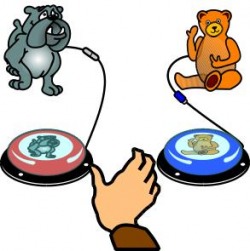
Making choices between two (or more) items with switches can be achieved in (at least) three ways:
- one switch leading directly to each item/option (as depicted left);
- one switch that activates a scanning choice to select from an array of
items/options;
- two switches that activate a scanning choice to select from an array of
items/options;
What are some of the reasons for making a choice with switches?
- to identify Learner cognition;
- to provide control experiences for the Learner;
- to provide a choice of options for the Learner.
Consider the following scenario:
- Two activities are set up such that they can be activated by two separate labelled switches. Switch One (attached to a Truck)
and Switch Two (attached to a Food Blender).
- A teacher asks our Learner to choose a preferred activity.
- The Learner activates Switch One and the Truck moves.
What do we understand by this action?
A The Learner has chosen to work with the truck.
B The Learner is capable of making choices.
C The Learner has cause and effect skills.
D All of the above.
E None of the above.
Can we assume that the Learner has chosen to work with the truck? No we cannot!
- Switch One may be placed on the Learner’s right side and the Learner, being right handed, always activates the right switch
first. Switch One is easier to hit than Switch Two. The Learner may have intended to activate Switch Two but did not have the
physicalcontrol and accidentally activated Switch One.
- Switch One is red and Switch Two is blue. The Learner finds red more appealing than blue.
- The teacher looked at the truck as she asked the question. The Learner doesn’t understand the teacher’s words but activates
the switch s/he believes the teacher intends.
- The Learner finds the truck’s colour more appealing
- Alternatively, …
The Learner may indeed have chosen to work with the truck but we cannot know this from this one action.
Can we assume that the Learner is capable of making choices? No we cannot! Simply because a Learner activates a switch does not mean that s/he has made a conscious choice. It only means that the Learner was able to activate one switch out of two. Neither does repeating the task demonstrate choice making even if the Learner activates the other switch this time. No amount of demonstrations in this manner will confirm conscious choice making:
- The ‘choice’ could be completely random;
- The activation could be dictated by the physical status of the Learner at that time;
- The Learner could be activating switches for a different reason than that stated; more attractive colour, teacher pointed at it,
it was nearer, …
Can we assume the Learner has cause and effect skills? After all, s/he activated a switch and moved the truck. No, we cannot! Simply because a Learner hits a switch placed in front of him/her within easy reach, it does not follow that s/he understands that the switch causes a POLE event.
- The Learner may have been attracted by the colour of the switch;
- The Learner may play with anything that is placed in his/her reach;
- The Learner saw the teacher point to the switch and reached out for it;
- The Learner was moving his/her arm and accidentally activated the switch.
Therefore the answer to the original question was ‘E’; none of the above. We cannot assume any of the items listed to be true and we should not make claims for such an action without additional evidence. What can we claim? Is there a way of knowing that the Learner has made a conscious choice if s/he cannot vocalise?
We can claim that, through repetitions of this type of choice provision, the Learner may come to understand what is selected is what is provided.
We can prove (to a reasonable level of certainty) that a Learner is making a conscious choice if we ask a question to which we know the answer in a manner that doesn’t give unintentional cues to the Learner:
- Sam had orange squash at break. He has a different drink most breaks.
- There was a choice of three drinks: orange, apple and blackcurrant.
- A person (who doesn’t know what Sam had to drink) asks Sam what drink he had at break.
- Sam (scans and) selects orange.
- The questioner tells the teacher who confirms that Sam had orange.
- This is repeated over several days.
- Sam is always correct in informing us of what he had to drink.
However, it may be that:
- Sam has the same drink (orange squash) every break.
- Sam thinks he is being asked to choose another drink (future - for an additional break) and does not comprehend that we are
asking him to state what he had previously (past).
If Sam has orange squash every break and he chooses orange when we question him after break, what can we deduce? It could be that he is simply indicating that he wants another orange; not what he had for break. However, we can say that he is very likely to be operating the switches with understanding as he is selecting ‘orange’ every time and not making a mistake and selecting one of the other choices.
If:
- Sam had Apple juice at break and;
- Sam chooses Blackcurrant in our test and;
- the staff simply rationalize that choice as ‘Oh Sam thinks we are providing a choice of drink and he’s choosing blackcurrant’
… then no progress is made. The test is not proving or disproving anything.However, if, in this scenario:
- Sam varies his drink choice from break to break and;
- correctly identifies his drink post-break, each time he is questioned;
we can start to assume that Sam:
- is capable of making a choice as he is consistently providing us with evidence of understanding;
- has cause and effect as this action is a higher order cognitive process;
- is capable of understanding and using the provided switch system.
Objective 17: The Learner will select the correct response from a choice of two when working with a ‘blind’ facilitator over X days.
Objective 18: The Learner will select the correct response from a choice of three when working with a ‘blind’ facilitator over X days.
Objective 19: The Learner will select the correct response from a choice of four when working with a ‘blind’ facilitator over X days.
- one switch leading directly to each item/option (as depicted left);
- one switch that activates a scanning choice to select from an array of
items/options;
- two switches that activate a scanning choice to select from an array of
items/options;
What are some of the reasons for making a choice with switches?
- to identify Learner cognition;
- to provide control experiences for the Learner;
- to provide a choice of options for the Learner.
Consider the following scenario:
- Two activities are set up such that they can be activated by two separate labelled switches. Switch One (attached to a Truck)
and Switch Two (attached to a Food Blender).
- A teacher asks our Learner to choose a preferred activity.
- The Learner activates Switch One and the Truck moves.
What do we understand by this action?
A The Learner has chosen to work with the truck.
B The Learner is capable of making choices.
C The Learner has cause and effect skills.
D All of the above.
E None of the above.
Can we assume that the Learner has chosen to work with the truck? No we cannot!
- Switch One may be placed on the Learner’s right side and the Learner, being right handed, always activates the right switch
first. Switch One is easier to hit than Switch Two. The Learner may have intended to activate Switch Two but did not have the
physicalcontrol and accidentally activated Switch One.
- Switch One is red and Switch Two is blue. The Learner finds red more appealing than blue.
- The teacher looked at the truck as she asked the question. The Learner doesn’t understand the teacher’s words but activates
the switch s/he believes the teacher intends.
- The Learner finds the truck’s colour more appealing
- Alternatively, …
The Learner may indeed have chosen to work with the truck but we cannot know this from this one action.
Can we assume that the Learner is capable of making choices? No we cannot! Simply because a Learner activates a switch does not mean that s/he has made a conscious choice. It only means that the Learner was able to activate one switch out of two. Neither does repeating the task demonstrate choice making even if the Learner activates the other switch this time. No amount of demonstrations in this manner will confirm conscious choice making:
- The ‘choice’ could be completely random;
- The activation could be dictated by the physical status of the Learner at that time;
- The Learner could be activating switches for a different reason than that stated; more attractive colour, teacher pointed at it,
it was nearer, …
Can we assume the Learner has cause and effect skills? After all, s/he activated a switch and moved the truck. No, we cannot! Simply because a Learner hits a switch placed in front of him/her within easy reach, it does not follow that s/he understands that the switch causes a POLE event.
- The Learner may have been attracted by the colour of the switch;
- The Learner may play with anything that is placed in his/her reach;
- The Learner saw the teacher point to the switch and reached out for it;
- The Learner was moving his/her arm and accidentally activated the switch.
Therefore the answer to the original question was ‘E’; none of the above. We cannot assume any of the items listed to be true and we should not make claims for such an action without additional evidence. What can we claim? Is there a way of knowing that the Learner has made a conscious choice if s/he cannot vocalise?
We can claim that, through repetitions of this type of choice provision, the Learner may come to understand what is selected is what is provided.
We can prove (to a reasonable level of certainty) that a Learner is making a conscious choice if we ask a question to which we know the answer in a manner that doesn’t give unintentional cues to the Learner:
- Sam had orange squash at break. He has a different drink most breaks.
- There was a choice of three drinks: orange, apple and blackcurrant.
- A person (who doesn’t know what Sam had to drink) asks Sam what drink he had at break.
- Sam (scans and) selects orange.
- The questioner tells the teacher who confirms that Sam had orange.
- This is repeated over several days.
- Sam is always correct in informing us of what he had to drink.
However, it may be that:
- Sam has the same drink (orange squash) every break.
- Sam thinks he is being asked to choose another drink (future - for an additional break) and does not comprehend that we are
asking him to state what he had previously (past).
If Sam has orange squash every break and he chooses orange when we question him after break, what can we deduce? It could be that he is simply indicating that he wants another orange; not what he had for break. However, we can say that he is very likely to be operating the switches with understanding as he is selecting ‘orange’ every time and not making a mistake and selecting one of the other choices.
If:
- Sam had Apple juice at break and;
- Sam chooses Blackcurrant in our test and;
- the staff simply rationalize that choice as ‘Oh Sam thinks we are providing a choice of drink and he’s choosing blackcurrant’
… then no progress is made. The test is not proving or disproving anything.However, if, in this scenario:
- Sam varies his drink choice from break to break and;
- correctly identifies his drink post-break, each time he is questioned;
we can start to assume that Sam:
- is capable of making a choice as he is consistently providing us with evidence of understanding;
- has cause and effect as this action is a higher order cognitive process;
- is capable of understanding and using the provided switch system.
Objective 17: The Learner will select the correct response from a choice of two when working with a ‘blind’ facilitator over X days.
Objective 18: The Learner will select the correct response from a choice of three when working with a ‘blind’ facilitator over X days.
Objective 19: The Learner will select the correct response from a choice of four when working with a ‘blind’ facilitator over X days.
Stage 8: Scanning

"Researchers and clinicians, as well as users, all agree that scanning is a complex task involving a variety of components, including motor, visual-perceptual, cognitive, and linguistic skills" (RATCLIFF A. 1994)
"Overall, the results of this study confirm the clinical practice of minimizing the cognitive, visual, and communicative demands on the initial trial tasks in assessing scanning access for AAC system use. This may mean using tasks and equipment other than the actual AAC equipment." (RATCLIFF A. 1994)
"Overall, the results of this study confirm the clinical practice of minimizing the cognitive, visual, and communicative demands on the initial trial tasks in assessing scanning access for AAC system use. This may mean using tasks and equipment other than the actual AAC equipment." (RATCLIFF A. 1994)

Scanning has to be taught. It is likely that the skills necessary will have to be progressed over time although some individuals may be able to ‘jump in at the deep end’. Communication devices, environmental control systems, and computer access (through an on-screen keyboard) will all require advanced scanning skills. The nature of the skills required will be governed by the cognitive and physical abilities of the Learner. Therefore, the goal is to teach the required skills in a staged approach starting simply and moving forward, slowly, one step at a time.
Earlier, the section on timing looked at some simple applications of scanning. Some of that section is repeated below and taken further.
As we have seen, scanning can begin without the use of a switch or any electronic system: we can present items in a scanning fashion to provide a Learner choice. Initially, perhaps, a single item presentation scan …
Earlier, the section on timing looked at some simple applications of scanning. Some of that section is repeated below and taken further.
As we have seen, scanning can begin without the use of a switch or any electronic system: we can present items in a scanning fashion to provide a Learner choice. Initially, perhaps, a single item presentation scan …
Apple (hide apple), Orange (hide orange), Banana (hide Banana), Apple …
|
|
Stepping one pace forward to a multi-presentation scan. Here the fruits are all present on the table top at the same time. The scan is provided by a laser pointer, pointing stick or a finger ... Apple, Orange, and Banana (on table top) Point to each in turn saying ‘Do you want Apple (Orange, Banana)?' The length of 'resting' time on each fruit may be variedaccording to need of the specific Learner. The Learner should indicate a choice by activating a BIGmack directly or via a switch. The BIGmack should say something very simple such as 'yes' or 'I want that'. |
We need to note if the Learner is visually tracking our movements: an important and necessary skill for most scanning systems. If the Learner does not track, or fails to perform in any way, the reason for the failure must be ascertained and addressed before any further progression is attempted. If you have used the finger pointing method, it may be that this is not sufficient a cue for the Learner: we may need to highlight each item with a laser pen (as suggested above) or a torch or in some other way to assist the Learner follow our movements and the location of the scan. Objectives for visual tracking have not been included. However, they may form a necessary part of skill set required for successful switch use and may be addressed separately. In the same way, other sensory and cognitive deficits have not been addressed but may impede progress in some manner. Each problem area must be addressed before attempting further progress. For example, a movement from real objects to symbols may be an issue for some Learners. In such an instance, symbol awareness will need to be taught.
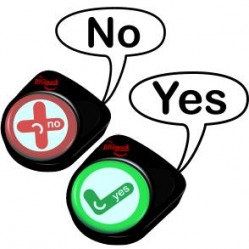
The next stage is to introduce a switch to control the scan. For real objects this seems to pose some problems! However, if you were to use two BIGmacks: one red with a symbol for NO on the left and one green with a symbol for YES on the right, the Learner could control your finger scan. For example, stop at the apple and wait for a response. 'No' means to continue the scan to the orange and then wait for another response. 'Yes' means the apple has been selected. Apple, orange, and banana are used as an example of objects but are not meant to suggest that the Learner is rewarded with small treats of fruit all day! There will probably be other motivating items that can be used in the scan. Indeed, there only needs to be ONE item that is motivating for the Learner, the other two can be boring red herrings. This is actually a better option as we will see. In using two BIGmacks in this way, the Learner is in complete control over the scan. The 'staff member involved is simply doing as instructed.
What if the Learner doesn't access the BIGmacks? Then this needs to be addressed. Why do you think that the Learner is doing this? What can be done to address it? It may be a simple solution such as prompting with a laser pen or it might require a specific area of learning to be addressed.
What if the Learner always says 'Yes'? It is one step on from the above problem. At least the Learner is aware of the BIGmacks. However, it highlights a fundamental problem of understanding of the task and strategies will have to be developed to address this specific issue.
What if the Learner always says 'No? As abiove.
What if the Learner doesn't access the BIGmacks? Then this needs to be addressed. Why do you think that the Learner is doing this? What can be done to address it? It may be a simple solution such as prompting with a laser pen or it might require a specific area of learning to be addressed.
What if the Learner always says 'Yes'? It is one step on from the above problem. At least the Learner is aware of the BIGmacks. However, it highlights a fundamental problem of understanding of the task and strategies will have to be developed to address this specific issue.
What if the Learner always says 'No? As abiove.
|
|
If the Learner can cope with symbols instead of real life items, a simple PowerPoint scanis a good way to begin: each activation of the switch moves to a new slide and each new slide depicts something that the Learner loves, combining music and pictures and even video. A few slides should be boring however. The purpose of this is in the observation of the Learner’s use of the switch. Does the Learner access the switch quickly on the boring slides to move it on to something more exciting? Does the Learner remain on the exciting slides for longer? This would suggest an excellent grasp of switch use.
As we have seen earlier, following on from this, the introduction of some simple scanning system such as the FL4SH from AbleNet (or the 4Talk4 from P&G) is a good means of moving forward. Leaving all but one cell blank, ask the Learner to activate the switch on the target cell (ensure the target cell operates some motivating reward for the Learner’s achievement). |
Gradually increasing the number of symbols on the FL4SH or the 4Talk4 makes the task a little more complex and, as such, demands more of the Learner. We can progress the Learner from a choice of one out of one (other areas blank) to a choice of one from four (all locations symbolized).
Generally speaking, after a simple linear scan we might move to a simple Row/Column scan of perhaps two or three rows. Again, this can be practised away from switches and computers. Consider the following task: Where is the apple?
It is the third item in row two. We can point to each row and ask ‘Is the apple in this row?’ Then we can scan the chosen row. We are teaching scanning skills without any switch or any device: just a few objects, symbols or pictures. You will note that there are other objects that are round like an apple, and some that are green, and one that is round and green. We can vary the difficulty of the task according to the ability of the Learner. Working with a novice, for example, we may have no other foods, round items, or green items in the set.
We can do other things to teach the concepts of rows and columns. We can play games with grids of symbols. We can play battleships which is a game of rows and columns. We can play Connect Four. In this and other simple ways, it is possible to begin the introduction of rows and columns away from the switch and the scan.
Scan patterns have not yet been mentioned. In English, we read from the top down and from left to right. Most scan patterns follow this same pattern. However, it does not have to be thus and we should not assume that the Learner thinks and works in this way. However, if this is the scan pattern that has been chosen for the Learner to use then we should ensure that work with the Learner both teaches and reinforces this approach. In the ‘apple’ example above, the facilitator should always begin with top row and cycle down and up until a selection of row is made. Then move from left to right along the chosen row.
It is the third item in row two. We can point to each row and ask ‘Is the apple in this row?’ Then we can scan the chosen row. We are teaching scanning skills without any switch or any device: just a few objects, symbols or pictures. You will note that there are other objects that are round like an apple, and some that are green, and one that is round and green. We can vary the difficulty of the task according to the ability of the Learner. Working with a novice, for example, we may have no other foods, round items, or green items in the set.
We can do other things to teach the concepts of rows and columns. We can play games with grids of symbols. We can play battleships which is a game of rows and columns. We can play Connect Four. In this and other simple ways, it is possible to begin the introduction of rows and columns away from the switch and the scan.
Scan patterns have not yet been mentioned. In English, we read from the top down and from left to right. Most scan patterns follow this same pattern. However, it does not have to be thus and we should not assume that the Learner thinks and works in this way. However, if this is the scan pattern that has been chosen for the Learner to use then we should ensure that work with the Learner both teaches and reinforces this approach. In the ‘apple’ example above, the facilitator should always begin with top row and cycle down and up until a selection of row is made. Then move from left to right along the chosen row.
Photographs Courtesy of Ms Judy King Positive Communication
One way of teaching a scan pattern and highlighting the part of the scan on which you want the learner to focus is to make a set of highlighter masks. These are basically (as depicted in the photographs above):
- a coloured cardboard rectangle with a ‘window’ to highlight the row being scanned.
- a coloured cardboard square with a window to highlight each item in the selected row.
The colour chosen for the card should ideally be the colour of any future scan on any future system. How will you know? Make an educated guess! Most systems are likely to have the basic primary colours as scanning options. Don’t use white or black card! Red, green and blue are safe bets.
The card cutouts also help to focus the Learner's attention onto a specific area of the page as well as teaching a basic scanning pattern. It should be seen that it is not necessary to start with computers or devices but, rather, with simple pictures on paper and a home-made crad frame.
- a coloured cardboard rectangle with a ‘window’ to highlight the row being scanned.
- a coloured cardboard square with a window to highlight each item in the selected row.
The colour chosen for the card should ideally be the colour of any future scan on any future system. How will you know? Make an educated guess! Most systems are likely to have the basic primary colours as scanning options. Don’t use white or black card! Red, green and blue are safe bets.
The card cutouts also help to focus the Learner's attention onto a specific area of the page as well as teaching a basic scanning pattern. It should be seen that it is not necessary to start with computers or devices but, rather, with simple pictures on paper and a home-made crad frame.
We now need to move this skill to the computer or a device so as to allow the user to practice it in real time on an external system. Clicker 5 (from Crick Software) (example screen shot left) offers one choice for such an activity on the computer. While it is possible to set up such an activity within PowerPoint, it is more complex.
There are a range of AAC devices that offer 8 locations with scan: TalkSense offers a number of such systems. The least expensive is the SpringBoard Lite System pictured on the right (shown in 32 location). As the SpringBoard has a dynamic screen the number of cells can be varied and thus, the Learner can be tasked with a greater challenge on mastery of the 8 location scan.
With both Clicker and SpringBoard (as well as other systems) the number of displayed cells (symbols), as well as their configuration, can be varied. Thus, the Learner can be tasked, from within the same program or device, with a slightly more challenging scan, once mastery of the prior scan has been achieved. There will come a point, however, when a maximum level is reached; either for the Learner or for the capabilities of the system. If one goal for the Learner is fast and effective communication then (generally speaking), the more locations available, the more speedy and powerful the system. If language is squeezed into a lesser number of locations then you have to have less language or more activations per item of vocabulary output.
It should be noted that working with switches, scanning, and selecting symbol sequences is both a physically and cognitively challenging task and, as such, will come later in the development of skills for the Learner. Scanning at 8 locations then should begin simpler with perhaps scans to specific locations perhaps to play a tune or achieve some other motivating reward (ask for a sweet for example!).
Objective 20: The Learner will select the ‘correct’ response from a 6-location (2x3) grid when working with a ‘blind’ facilitator.
Objective 21: The Learner will select the ‘correct’ response from an 8-location (2x4) grid when working with a ‘blind’ facilitator.
Objective 22: The Learner will select the correct symbol from his 8 location system when working with a ‘blind’ facilitator.
There are a range of AAC devices that offer 8 locations with scan: TalkSense offers a number of such systems. The least expensive is the SpringBoard Lite System pictured on the right (shown in 32 location). As the SpringBoard has a dynamic screen the number of cells can be varied and thus, the Learner can be tasked with a greater challenge on mastery of the 8 location scan.
With both Clicker and SpringBoard (as well as other systems) the number of displayed cells (symbols), as well as their configuration, can be varied. Thus, the Learner can be tasked, from within the same program or device, with a slightly more challenging scan, once mastery of the prior scan has been achieved. There will come a point, however, when a maximum level is reached; either for the Learner or for the capabilities of the system. If one goal for the Learner is fast and effective communication then (generally speaking), the more locations available, the more speedy and powerful the system. If language is squeezed into a lesser number of locations then you have to have less language or more activations per item of vocabulary output.
It should be noted that working with switches, scanning, and selecting symbol sequences is both a physically and cognitively challenging task and, as such, will come later in the development of skills for the Learner. Scanning at 8 locations then should begin simpler with perhaps scans to specific locations perhaps to play a tune or achieve some other motivating reward (ask for a sweet for example!).
Objective 20: The Learner will select the ‘correct’ response from a 6-location (2x3) grid when working with a ‘blind’ facilitator.
Objective 21: The Learner will select the ‘correct’ response from an 8-location (2x4) grid when working with a ‘blind’ facilitator.
Objective 22: The Learner will select the correct symbol from his 8 location system when working with a ‘blind’ facilitator.
Auditory Scanning
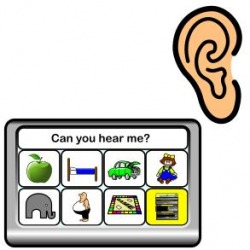
Note: No mention has yet been made of auditory scanning. As its name implies, auditory scanning provides an additional auditory prompt element to the scan. Each item that is scanned on a selected row (for example) can be named as it is scanned. Most auditory scans allow customization such that a different voice may be used for the scan to that used for any spoken output. While the auditory output can be identical to the spoken output, it is typically a shorter phrase or just a single word, For example: if, under the 'apple', was stored the phrase 'Can I have something to eat please?', the auditory prompt might be 'eat' or 'apple' or 'something to eat'. Auditory prompts allow people who may have poor visual acuity to make better use of voice output communication aids and are also useful in assisting those with lower cognitive abilities.
Your browser does not support viewing this document. Click here to download the document.
Your browser does not support viewing this document. Click here to download the document.
Stage 9: Switching for staff - good practice in the classsroom
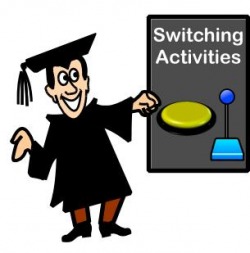
"If children don’t learn the way we teach,
We must strive to teach the way they learn."
Thus far, we have concentrated on helping the Learner to develop the necessary switching skills to be able to be in control of his or environment. However, we have neglected to mention a very important factor: establishment/staff attitude, expectations and practice!
An initial point, which we must all acknowledge, is the fundamental right of the switch user to be included in all that happens in the classroom. In 2001, the Special Educational Needs and Disability Act changed the 1995 Disability Discrimination Act to be inclusive of schools and colleges. Thus it became unlawful to discriminate against a Learner experiencing a disability in all aspects of school life without proper justification. Thus, real inclusion has taken yet another step forward.
However, inclusion does NOT equate with integration. They are not synonymous:
“We seem to use integration and inclusion as synonymous. This is not helpful and it would be useful is we could agree what we
mean by each of these.” (http://www.diseed.org.uk)
Indeed, integration can mean further segregation: the child integrated into a place where s/he is not accepted and included can feel more segregated than the child who was not integrated. While we might be integrated into a whole series of lectures by Stephen Hawking, the authors would undoubted feel lost with the level of knowledge required to participate; therefore, we would be integrated but not included. To be included, the tutor, and the rest of the class would have to change their practice. Simply providing an additional (part-time) member of staff to work alongside the authors in the series of lectures and ‘translate’ Stephen’s language into the ‘English’ that we might understand is insufficient and not inclusion.
Integration + Translation ≠ Inclusion
Including the Learner (who happens to use a switch or switches to participate) may be daunting for many staff. Even in ‘specialist’ establishments, the switch user may still be marginalised and under tasked or segregated. Staff may find the Learner very challenging: they may find that s/he:
- is at a completely different level to the rest of the class;
- does not understand staff communication;
- uses equipment with which they are unfamiliar;
- requires additional help from other specialist staff which means that they miss significant parts of lessons;
- is too slow and holds up the progression of the others in the class;
- finds the level of work inappropriate and is constantly failing to achieve;
- cannot use his/her communication system to answer class questions;
- begins to behave in a challenging fashion after a short period in the group.
On the other hand, staff might naively claim that the Learner is understanding and following all that is happening within the class when in fact most it is flying over the Learner’s head at an incredible rate! The supporting member of staff (LSA) is the one who is, in fact, completing most of the work on the Learner’s part, for which the Learner is being credited.
All scenarios are clearly unacceptable and none is inclusive.
Generally speaking, teaching staff at all levels are already fully tasked with work. They work long hours and put in a great deal of effort to deliver the school curriculum. Therefore, the suggestions that follow obey the ‘30 Second Rule’ (Caroline Musselwhite); that is, they can be delivered in thirty seconds or less by almost any member of staff. While some may take a little longer to prepare, once preparation is complete – the materials can be used again and again. They should take no longer than 30 seconds to implement. They can (and should) be used with the whole class such that the Learner is included as a part of the ‘system’ of the classroom and does not feel that ‘special’ measures are being adopted on his or her part (and only on his or her part). Such ‘special measures’ may, in fact, mark the Learner as different from the other children and set him/her apart in an alternative form of segregation.
Several studies show the benefit (for both those with and without disabilities) of the integration of Learners experiencing severe disabilities into general education settings particularly in relation to the social aspects of learning (acceptance, self-esteem, and social skills) (see for example - Kennedy, Shukla, & Fryxell, 1997; Mu, Siegel, & Allinder, 2000). Although some studies indicate academic gains, generally, teachers find the inclusion of Learners with severe disabilities in the ‘academic’ curriculum much more challenging (Heller, 2001). The authors’ classroom experience reinforces this notion. Staff are often unable to articulate why Learners are using switches in a particular way or why the Learner is performing a particular task with a switch (making a toy move for example). In some instances, Learners have been observed following what appear to be completely distinct activities to the rest of their peers in the class and, on many occasions, have been removed to a separate section of the school or college. Learners may spend an inappropriate amount of time on variations of a basic activity (making the dog walk to making the cat sing) because staff are unsure how to proceed.
Not all the suggestions that follow will work in every classroom on every occasion; readers must feel free to pick the ones that make sense to them and adapt them for their own needs. If there are other didactic approaches that are not covered, the authors will gratefully accept (acknowledge and disseminate) any further suggestions received for other successful practices.
Cognitive Engagement and Evidence Based Practice
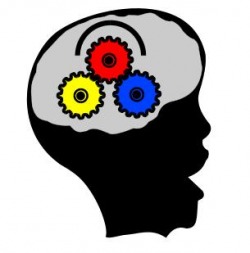
Many classroom don’t really engage the learners cognitively. They are there but not included:
We program a BIGmack to say good morning and then cycle the class to let every Learner take a swipe at it. They learn that if it is placed in front of you …’hit it’ but little else.
We provide ‘choices’ and we believe that is inclusion. No one ever stops to think that the choices are errorless: the Learner can choose anything and can ‘coast’ through the day without really being engaged cognitively.
We make assumptions of understanding based on very scant evidence: ‘he smiles’, ‘she seems to respond appropriately’, ‘his body language says that he is aware’, ‘her intelligence is trapped inside’ … the list goes on. While, in some cases, these are indicators of understanding, they should not be taken as such. The reverse is also true, simply because a Learner does not respond does not mean that s/he has not understood.
Cognitve Engagement is the antidote to the flyswatting syndrome and to passivity of which flyswatting is a feature. Planing for cognitive engagement ensures that staff are promoting real learning and not just assumptions of learning, The movement towards evidence-based practice (EBP) that first appeared in the 1970s but didn't really make any significant impact until the 1990's has spread from the field of Health and Medicine to education. We are encouraged to believe that practice should be based on 'evidence' which comes from sound research. While not wanting to enter the debate over such practice here, it seems to me that there needs to a greater degree of evidence of understanding in the special needs classroom and not simply assumptions of such. Research need not always be external, proof of understanding can be evidenced quite simply in real time situations to the benefit all of all involved.
‘It is not possible to establish that a Learner hasn’t grasped a concept but it is possible to prove that they have.’
In other words: if John just sits there and does nothing, it does not mean he hasn’t taken in the intended learning. If John fails all the tests, it still would be incorrect to say ‘John cannot’ or ‘John does not know that ...’ – all one really knows is that John failed the tests. However, if John performs in some way or passes post learning tests then we can say for certain that he has grasped the concept, has learnt the lesson, has understood. The problem is that so many staff accept almost anything as ‘evidence of understanding’.
We need to engage learners cognitively. There are various techniques for doing this, the better ones have in-built indicators of success and are in themselves self-contained EBF.
Listen and Learn. The Learner is tasked to listen to what is being said and perform some task when a particular 'thing' occurs. For example: John is asked to activate his BIGmack every time the word ‘elephant’ is said. The BIGmack simply repeats the word ‘elephant’ excitedly. John is rewarded for every correct ‘interruption’. The BIGmack is labelled with the symbol for elephant. John’s performance is, itself, an indicator of success.
Watch and Say. The Learner is tasked to watch a particular piece or performance by another and say when a particular point is reached. For example: Julia is asked to indicate when the ball is reached in a on line scan of four items where one other item is also spherical (for example, an orange) and one other item is the same colour as the ball and yet another item is completely different but placed in what is thought to be the Learner’s preferred position (she always chooses the one on the left). If Julia indicates the correct item then that in itself is an indicator of cognitive engagement. Of course, it could have neen accidental (a fluke) but repeated success strongle suggest cognitive engagement. A variation on this approach is to place another identical ball in a box so that Julia can see it at all times BUT the facilitating staff member cannot. It is preferable that the staff member does NOT know what is in the box (the ball was chosen and placed in the box by another member of staff in secret) and that the facilitator only is deciding which choice Julia is making as s/he points to each of the four items in turn. A correct response could merely be a chance occurrence but what if there are two correct responses or three … This is a fun game that’s easy to set up and requires little if any technology and yet speaks volumes about a Learner’s understanding if successful. If Julia does not succeed, it is NOT possible to state that she does not understand: all we can say is that she did not succeed.
We program a BIGmack to say good morning and then cycle the class to let every Learner take a swipe at it. They learn that if it is placed in front of you …’hit it’ but little else.
We provide ‘choices’ and we believe that is inclusion. No one ever stops to think that the choices are errorless: the Learner can choose anything and can ‘coast’ through the day without really being engaged cognitively.
We make assumptions of understanding based on very scant evidence: ‘he smiles’, ‘she seems to respond appropriately’, ‘his body language says that he is aware’, ‘her intelligence is trapped inside’ … the list goes on. While, in some cases, these are indicators of understanding, they should not be taken as such. The reverse is also true, simply because a Learner does not respond does not mean that s/he has not understood.
Cognitve Engagement is the antidote to the flyswatting syndrome and to passivity of which flyswatting is a feature. Planing for cognitive engagement ensures that staff are promoting real learning and not just assumptions of learning, The movement towards evidence-based practice (EBP) that first appeared in the 1970s but didn't really make any significant impact until the 1990's has spread from the field of Health and Medicine to education. We are encouraged to believe that practice should be based on 'evidence' which comes from sound research. While not wanting to enter the debate over such practice here, it seems to me that there needs to a greater degree of evidence of understanding in the special needs classroom and not simply assumptions of such. Research need not always be external, proof of understanding can be evidenced quite simply in real time situations to the benefit all of all involved.
‘It is not possible to establish that a Learner hasn’t grasped a concept but it is possible to prove that they have.’
In other words: if John just sits there and does nothing, it does not mean he hasn’t taken in the intended learning. If John fails all the tests, it still would be incorrect to say ‘John cannot’ or ‘John does not know that ...’ – all one really knows is that John failed the tests. However, if John performs in some way or passes post learning tests then we can say for certain that he has grasped the concept, has learnt the lesson, has understood. The problem is that so many staff accept almost anything as ‘evidence of understanding’.
We need to engage learners cognitively. There are various techniques for doing this, the better ones have in-built indicators of success and are in themselves self-contained EBF.
Listen and Learn. The Learner is tasked to listen to what is being said and perform some task when a particular 'thing' occurs. For example: John is asked to activate his BIGmack every time the word ‘elephant’ is said. The BIGmack simply repeats the word ‘elephant’ excitedly. John is rewarded for every correct ‘interruption’. The BIGmack is labelled with the symbol for elephant. John’s performance is, itself, an indicator of success.
Watch and Say. The Learner is tasked to watch a particular piece or performance by another and say when a particular point is reached. For example: Julia is asked to indicate when the ball is reached in a on line scan of four items where one other item is also spherical (for example, an orange) and one other item is the same colour as the ball and yet another item is completely different but placed in what is thought to be the Learner’s preferred position (she always chooses the one on the left). If Julia indicates the correct item then that in itself is an indicator of cognitive engagement. Of course, it could have neen accidental (a fluke) but repeated success strongle suggest cognitive engagement. A variation on this approach is to place another identical ball in a box so that Julia can see it at all times BUT the facilitating staff member cannot. It is preferable that the staff member does NOT know what is in the box (the ball was chosen and placed in the box by another member of staff in secret) and that the facilitator only is deciding which choice Julia is making as s/he points to each of the four items in turn. A correct response could merely be a chance occurrence but what if there are two correct responses or three … This is a fun game that’s easy to set up and requires little if any technology and yet speaks volumes about a Learner’s understanding if successful. If Julia does not succeed, it is NOT possible to state that she does not understand: all we can say is that she did not succeed.
Staff Awareness
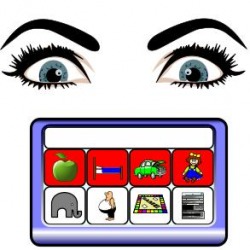
Some staff have never experienced using the equipment utilised by their Learners. Sometimes there is only one of such items and that belongs to the Learner and is unavailable to staff. How can one have real empathy for a person when you have never walked a ‘mile in his/her shoes’? Staff should have real experiences of what daily life is like for such a Learner so that they can better prepare for their presence in the class and for successful inclusion and education.
Success is not about having the latest, the best, and the most expensive technology. If it were, the solution would be easy. More success can be achieved with limited access to technology via staff with a positive and consistent attitude and excellent working practices than visa versa. That is not to say technology does not have its part to play and cannot help ameliorate an otherwise difficult situation. Technology is important and should not be overlooked. Good staff awareness together with good practice and excellent technology is a recipe for success.
There is no substitute for regular training from professionals who know their subject. Finding such professionals may not be that easy but they are out there. Most would be willing to give advice to individual staff members from time to time when staff are experiencing frustrations with the sessions they have prepared.
Success is not about having the latest, the best, and the most expensive technology. If it were, the solution would be easy. More success can be achieved with limited access to technology via staff with a positive and consistent attitude and excellent working practices than visa versa. That is not to say technology does not have its part to play and cannot help ameliorate an otherwise difficult situation. Technology is important and should not be overlooked. Good staff awareness together with good practice and excellent technology is a recipe for success.
There is no substitute for regular training from professionals who know their subject. Finding such professionals may not be that easy but they are out there. Most would be willing to give advice to individual staff members from time to time when staff are experiencing frustrations with the sessions they have prepared.
Terminology
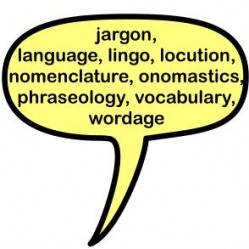
... the terminology we choose for referring to individuals with severe communication impairments can shape our attitudes and those of others regarding those individuals. (MUSSELWHITE C. R. 1987)
Fire will Burn, Sharp axes can Hack,
But none are so Lethal, As the Verbal Attack
Shattering Syllables, Can slice through your Ears,
Sever your Heart, Nurture your Fears
They will Shatter you Soul, Push you to Death,
Those Poisonous Sounds, In each Killer Breath
Fire will Burn, Sharp axes can Hack,
But remember the pain, Of your Verbal Attack
Kate Preece 1996
The latest politically correct terminology is an ever-evolving field of potential study: when does it change? How does it change? And, perhaps, more importantly, why does it change? However, granting that whatever we say about correct terminology now will be incorrect by the time you read this paper, we still believe that the things we say and the way that we say them can not only be not inclusive but also hurtful.
It is the authors’ opinion that there is no need for specialist vocabulary when addressing Learners experiencing physical disabilities and or learning difficulties as long as staff relate to them as people first. We should no more shout, use distinct vocabularies, gesticulate, or communicate in any special way distinct to the way we would communicate with any other member of the group. For what is good for John will also ease the way for John’s peers too. For example, if you sign to Jenny then you should sign to Justin and Julia and … Indeed, its only by using sign everyday that both staff and peers learn the use of sign and, it’s only in learning the use of sign that includes those that require its use (to aid understanding) in all that we do. In same the same way, we should utilise a symbol system for the benefit of all. It won’t slow things down, it won’t make things more difficult: indeed, you will find that it aids the understanding of all. Which symbol system? We would hesitate to recommend one above another: there are over 40 symbol systems commercially available for AAC alone (Augmentative and Alternative Communication). Whichever is selected it should be utilised for the benefit of all the students in the classroom and not just for a specific individual (marking him/her as distinct). For example, symbol boards and Clicker grids can be utilised to benefit all children across the curriculum.
Fire will Burn, Sharp axes can Hack,
But none are so Lethal, As the Verbal Attack
Shattering Syllables, Can slice through your Ears,
Sever your Heart, Nurture your Fears
They will Shatter you Soul, Push you to Death,
Those Poisonous Sounds, In each Killer Breath
Fire will Burn, Sharp axes can Hack,
But remember the pain, Of your Verbal Attack
Kate Preece 1996
The latest politically correct terminology is an ever-evolving field of potential study: when does it change? How does it change? And, perhaps, more importantly, why does it change? However, granting that whatever we say about correct terminology now will be incorrect by the time you read this paper, we still believe that the things we say and the way that we say them can not only be not inclusive but also hurtful.
It is the authors’ opinion that there is no need for specialist vocabulary when addressing Learners experiencing physical disabilities and or learning difficulties as long as staff relate to them as people first. We should no more shout, use distinct vocabularies, gesticulate, or communicate in any special way distinct to the way we would communicate with any other member of the group. For what is good for John will also ease the way for John’s peers too. For example, if you sign to Jenny then you should sign to Justin and Julia and … Indeed, its only by using sign everyday that both staff and peers learn the use of sign and, it’s only in learning the use of sign that includes those that require its use (to aid understanding) in all that we do. In same the same way, we should utilise a symbol system for the benefit of all. It won’t slow things down, it won’t make things more difficult: indeed, you will find that it aids the understanding of all. Which symbol system? We would hesitate to recommend one above another: there are over 40 symbol systems commercially available for AAC alone (Augmentative and Alternative Communication). Whichever is selected it should be utilised for the benefit of all the students in the classroom and not just for a specific individual (marking him/her as distinct). For example, symbol boards and Clicker grids can be utilised to benefit all children across the curriculum.
Walls are not boundaries
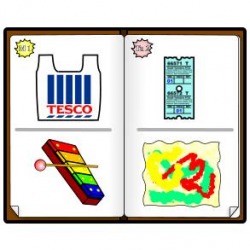
Education does not stop at the wall of any particular classroom, it extends beyond walls and pervades every aspect of that school. It extends beyond the school to pervade every aspect of the community which, of course, is inclusive of parents and carers. We must share our practice and our success and failures with all Significant Others (parents, carers, social workers, key workers , …) involved. They too must be included for the experience to be called ‘inclusive’. A home-school diary is one way of doing this. A Memory Book is another (Click on the symbol for a more deatiled explanation of Memory Books). How does a Memory Book differ from a home-school diary? A home-school diary tends to be a messaging system between school and varying Significant Others (notably parents) with very little involvement (inclusion?) of the Learner him or herself. A Memory Book however, is a record of the events of the day presented in a medium that is meaningful to the Learner. For each session of the day (perhaps towards the end of the session) the Learner is assisted (where necessary) to fill in his/her Memory Book with an example of what s/he has been doing in the session. This may only include written text where the Learner is literate and is able to make the entry him/herself. Generally, it will include an item produced in the session (or part of an item produced in the session) or an item that came out of the session that would normally be discarded. Such items are glued into the appropriate position in the Learner’s diary by the Learner (with assistance where necessary). Still uncertain about a Memory Book? Consider the following examples:
- During a finger painting session the teacher gave Sally a small 3 x 3 piece of paper on which she could use the colours that
she had used in her painting. The idea was not to make a smaller reproduction of a larger work but to act as a reminder of the
work she had done in that particular lesson. Sally stuck the paper reminder in her diary. The teacher annotated the Memory
Book ‘Sally finger painted today’. The teacher did not say what Sally painted: that was for Sally to remember and inform
Significant Others looking at the Memory Book entry later.
- After a trip to the supermarket, staff helped David ‘recycle’ his plastic supermarket bag by assisting his pasting its supermarket
logo into his Memory Book. For good measure, David also included the wrapper from an item he had purchased independently.
- Rian had ‘played’ a space invader game during an I.T. session. The aim was to improve her switch coordination and timing in a
fun and exciting way. Staff had created a screen capture which was shrunk in size and printed out for Rian to add to her book.
- Matthew had been on a train and a bus as a part of independence studies. Matthew glued his train and bus tickets into his
Memory Book.
- Jenny had spent a session taking turns singing lines from a favourite song using a Step by Step device together with a member
of staff. A digital photo of them working together was included in the Memory Book.
The Memory Book travels with the Learner. It is the Learner’s property. Significant Others are encouraged to assist the Learner to complete it for evenings out of school and weekends and holidays. In this way, Learners build a picture of their world; a historical record of what has been in a medium that is meaningful. The study of history (for a Learner experiencing severe learning difficulties) might begin with such a personal record. Furthermore, future events, such as the school disco, can be placed in context: the ticket can be attached to Memory Book in the correct position so that the Learner gets a ‘feel’ for how far away it is.
The home-school diary and the Memory Book are but two ways of many of extending the learning experience beyond the school walls and involving all Significant Others.
- During a finger painting session the teacher gave Sally a small 3 x 3 piece of paper on which she could use the colours that
she had used in her painting. The idea was not to make a smaller reproduction of a larger work but to act as a reminder of the
work she had done in that particular lesson. Sally stuck the paper reminder in her diary. The teacher annotated the Memory
Book ‘Sally finger painted today’. The teacher did not say what Sally painted: that was for Sally to remember and inform
Significant Others looking at the Memory Book entry later.
- After a trip to the supermarket, staff helped David ‘recycle’ his plastic supermarket bag by assisting his pasting its supermarket
logo into his Memory Book. For good measure, David also included the wrapper from an item he had purchased independently.
- Rian had ‘played’ a space invader game during an I.T. session. The aim was to improve her switch coordination and timing in a
fun and exciting way. Staff had created a screen capture which was shrunk in size and printed out for Rian to add to her book.
- Matthew had been on a train and a bus as a part of independence studies. Matthew glued his train and bus tickets into his
Memory Book.
- Jenny had spent a session taking turns singing lines from a favourite song using a Step by Step device together with a member
of staff. A digital photo of them working together was included in the Memory Book.
The Memory Book travels with the Learner. It is the Learner’s property. Significant Others are encouraged to assist the Learner to complete it for evenings out of school and weekends and holidays. In this way, Learners build a picture of their world; a historical record of what has been in a medium that is meaningful. The study of history (for a Learner experiencing severe learning difficulties) might begin with such a personal record. Furthermore, future events, such as the school disco, can be placed in context: the ticket can be attached to Memory Book in the correct position so that the Learner gets a ‘feel’ for how far away it is.
The home-school diary and the Memory Book are but two ways of many of extending the learning experience beyond the school walls and involving all Significant Others.
Little things matter

Why don't elephant like working with computers? Because they are afraid of mice! That joke is worthy of any Christmas cracker but makes the point that little things can have a big effect.
Have you ever tried to take a pram or a pushchair around a busy shop? Generally speaking they are not designed for such an intrusion and yet, if they were, would it be a disadvantage to the rest of us? Ever had a problem getting about due to an injury and struggled with a set of steps? We suggest, that far from being a disadvantage, that most of us would actually prefer the space and freedom of movement that was the result of a change in the layout of a busy shop or alternate access via a ramp rather than steps. Likewise, manipulating the classroom environment for the needs of people in wheelchairs or with problems or mobility can make the classroom better for all. Gently sloping ramps instead of steps do not handicap the ambulant in any way but make buildings more accessible for those who are not ambulant. Indeed, the design of the environment should try to take away the need for the ‘special’ and make everything available (inclusive) to all …
“That’s fine, in theory, but I have thirty two children in my class, thirty four if you count Julia’s Classroom Assistant and myself.
How are we supposed to organise it so that there is space for a wheelchair to move around?”
We admit that not all classrooms are suited to wheelchair use and that some class sizes are better than others. However, we are not suggesting complete freedom of movement, merely an organisation that takes into account, and better suits, wheelchairs. If space is an issue because of enlarged class sizes (or just small classrooms) then it should be addressed at management level: failure so to do may result in criticism at the time of inspection. Integration without resources (and one resource is the necessary space) is not inclusion but rather tokenism.
“Ah but we need a special computer for Jonathon”
Why do you need a special computer for Jon? Why can’t he use any computer in the classroom? He has special access equipment? Modern equipment is usually not very bulky and simply plugs into any available USB port (and it’s really easy to make USB ports accessible on every computer). It’s a bit more bulky than that? Then put it on a mobile rise and fall table so it can be easily used on any computer. He needs special software? Isn’t all the software on the network accessible by any computer? If not, why not? The issue here is not really a special computer for Jon but marking Jon out as ‘special’. If there is a special computer for Jon then there ought to be a special computer for every member of the class. If they have to share, then so should Jon. There may be scenarios where Jon is limited to the use of one computer but every effort should have been made to try to avoid this.
“Actually, Julia requires a lot of specialist equipment and materials.”
That may be so, however why would that affect the design of the classroom, as long as things are organised and accessible. Rather than having special materials just for Julia, we would suggest that you try to use as many of those special materials for all the class. Sign and symbols can be used across the curriculum with all. Keep the range of special materials that are used just for the tuition of Julia to the minimum. Indeed, try and eliminate them altogether.
"Yes but switches are specialist equipment and Julia needs a switch are you saying that we must do everything via switches?"
No, not everything ... but all the class can control some things on the computer through a switch and many electrical items in the classroom can be controlled through a switch ...
Little Things Matter... How many ‘F’s are there in the sentence below?
“Finished Files are the Result
of Years of Scientific
Study Combined with the
Experience of Many Years”
What did you get? Did you get one, two, three, or something else? Come on, admit it … what the majority of people say when asked the question is three, overlooking the two occurrences of the word ‘of’ in the sentence taking the tally to five! We naturally overlook the little things – they don’t matter, do they? Actually, yes they do! The answer is completely different when we don’t overlook them. Having made the point, hopefully, the issues below will become more cogent.
What are the little things? Such things as the correct colour of switch, in the correct position, correctly labelled. Any switch, in ‘approximately the right position’, and it ‘doesn’t need to be labelled: Julia knows what it is used for’ is completely the wrong attitude.
More little things? The ways in which staff interact with Learners, are important:
- Say the Learner’s name first to get their attention: “Julie, stop what you are doing.”
- Provide time for the Learner to process information.
- Use short and simple language, avoiding such things as metaphors (pull your socks up), irony, jokes, etc as these may be
taken literally and misconstrued. However, this does not mean that staff should ‘talk down’ to learners or be patronizing.
- Assisting the learning of new vocabulary (or old vocabulary used in a new way) through the creation of Learner dictionaries
(for example) in which words are matched with symbols and or pictures.
- Support your language with other modalities. For example, supporting language with models, photographs, pictures, drawings
and/or symbols.
- Don’t be tempted to finish a Learner’s sentence for them even if they are very slow if they haven’t given you permission.
Don’t make the rest of the class wait while the Learner prepares a response, attempts to reach a switch ... – it adds extra
stress for all.
- Providing choices.
- Knowing when to step in and assist and knowing when to step back and allow the Learner to lead.
- Using alternatives to written reports for Learners who are presently non-literate. That is not to say that we give up on the
development of literacy skills. Some communication devices will link to computers and may be able to produce written text.
- Communicate at the Learner’s level when possible, it is easier and less threatening. Some learners (notably those with ASD)
may find eye contact problematic.
- Respect all Learner communication.
There is no claim that the above list is comprehensive.
Have you ever tried to take a pram or a pushchair around a busy shop? Generally speaking they are not designed for such an intrusion and yet, if they were, would it be a disadvantage to the rest of us? Ever had a problem getting about due to an injury and struggled with a set of steps? We suggest, that far from being a disadvantage, that most of us would actually prefer the space and freedom of movement that was the result of a change in the layout of a busy shop or alternate access via a ramp rather than steps. Likewise, manipulating the classroom environment for the needs of people in wheelchairs or with problems or mobility can make the classroom better for all. Gently sloping ramps instead of steps do not handicap the ambulant in any way but make buildings more accessible for those who are not ambulant. Indeed, the design of the environment should try to take away the need for the ‘special’ and make everything available (inclusive) to all …
“That’s fine, in theory, but I have thirty two children in my class, thirty four if you count Julia’s Classroom Assistant and myself.
How are we supposed to organise it so that there is space for a wheelchair to move around?”
We admit that not all classrooms are suited to wheelchair use and that some class sizes are better than others. However, we are not suggesting complete freedom of movement, merely an organisation that takes into account, and better suits, wheelchairs. If space is an issue because of enlarged class sizes (or just small classrooms) then it should be addressed at management level: failure so to do may result in criticism at the time of inspection. Integration without resources (and one resource is the necessary space) is not inclusion but rather tokenism.
“Ah but we need a special computer for Jonathon”
Why do you need a special computer for Jon? Why can’t he use any computer in the classroom? He has special access equipment? Modern equipment is usually not very bulky and simply plugs into any available USB port (and it’s really easy to make USB ports accessible on every computer). It’s a bit more bulky than that? Then put it on a mobile rise and fall table so it can be easily used on any computer. He needs special software? Isn’t all the software on the network accessible by any computer? If not, why not? The issue here is not really a special computer for Jon but marking Jon out as ‘special’. If there is a special computer for Jon then there ought to be a special computer for every member of the class. If they have to share, then so should Jon. There may be scenarios where Jon is limited to the use of one computer but every effort should have been made to try to avoid this.
“Actually, Julia requires a lot of specialist equipment and materials.”
That may be so, however why would that affect the design of the classroom, as long as things are organised and accessible. Rather than having special materials just for Julia, we would suggest that you try to use as many of those special materials for all the class. Sign and symbols can be used across the curriculum with all. Keep the range of special materials that are used just for the tuition of Julia to the minimum. Indeed, try and eliminate them altogether.
"Yes but switches are specialist equipment and Julia needs a switch are you saying that we must do everything via switches?"
No, not everything ... but all the class can control some things on the computer through a switch and many electrical items in the classroom can be controlled through a switch ...
Little Things Matter... How many ‘F’s are there in the sentence below?
“Finished Files are the Result
of Years of Scientific
Study Combined with the
Experience of Many Years”
What did you get? Did you get one, two, three, or something else? Come on, admit it … what the majority of people say when asked the question is three, overlooking the two occurrences of the word ‘of’ in the sentence taking the tally to five! We naturally overlook the little things – they don’t matter, do they? Actually, yes they do! The answer is completely different when we don’t overlook them. Having made the point, hopefully, the issues below will become more cogent.
What are the little things? Such things as the correct colour of switch, in the correct position, correctly labelled. Any switch, in ‘approximately the right position’, and it ‘doesn’t need to be labelled: Julia knows what it is used for’ is completely the wrong attitude.
More little things? The ways in which staff interact with Learners, are important:
- Say the Learner’s name first to get their attention: “Julie, stop what you are doing.”
- Provide time for the Learner to process information.
- Use short and simple language, avoiding such things as metaphors (pull your socks up), irony, jokes, etc as these may be
taken literally and misconstrued. However, this does not mean that staff should ‘talk down’ to learners or be patronizing.
- Assisting the learning of new vocabulary (or old vocabulary used in a new way) through the creation of Learner dictionaries
(for example) in which words are matched with symbols and or pictures.
- Support your language with other modalities. For example, supporting language with models, photographs, pictures, drawings
and/or symbols.
- Don’t be tempted to finish a Learner’s sentence for them even if they are very slow if they haven’t given you permission.
Don’t make the rest of the class wait while the Learner prepares a response, attempts to reach a switch ... – it adds extra
stress for all.
- Providing choices.
- Knowing when to step in and assist and knowing when to step back and allow the Learner to lead.
- Using alternatives to written reports for Learners who are presently non-literate. That is not to say that we give up on the
development of literacy skills. Some communication devices will link to computers and may be able to produce written text.
- Communicate at the Learner’s level when possible, it is easier and less threatening. Some learners (notably those with ASD)
may find eye contact problematic.
- Respect all Learner communication.
There is no claim that the above list is comprehensive.
All for one and one for all
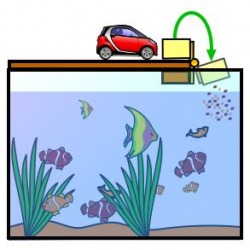
Inclusion means just that: the Learner is included in everything and not segregated or excluded. If others members of the class are given chores and responsibilities so should our Learner. How can Jenny be involved in caring for the class pets when she is severely disabled? One has to think creatively and laterally: Jenny could feed the fish for example – a switch could operate a moving vehicle or animal which could topple a hinged container which drops the correct amount of food into the fish tank. Sure, someone has to place the food in the container each time but Jenny has the responsibility for the food delivery. What if Jenny forgets? What would you do if any other member of the class forgot? Then do exactly the same: simply because Jenny has a disability does not disbar her from responsibility.
Sam cannot join in every Physical Activity session? There will be some activities in which the Learner will find it very difficult to participate. However, it should not be assumed that inclusion means competing at the same level with the same goals, targets and objectives for everyone. Sam’s goals, targets, and objectives will be individual, different to peers in the class. Sam should not be excluded from P.E. and, in some sessions, might be included by being placed in control! For example, in a particular session, the children play a game where they are required to move around to music and then be completely stationary when the music stops. Sam’s body is always moving and Sam finds it impossible to be stationary. If the tutor ignores this, the other children complain, saying that it is unfair, as well they might. Sam is put in control of the activity. It is Sam’s responsibility to switch on and switch off the music at random intervals. Staff are freed to observe and judge the game.
Sam cannot join in every Physical Activity session? There will be some activities in which the Learner will find it very difficult to participate. However, it should not be assumed that inclusion means competing at the same level with the same goals, targets and objectives for everyone. Sam’s goals, targets, and objectives will be individual, different to peers in the class. Sam should not be excluded from P.E. and, in some sessions, might be included by being placed in control! For example, in a particular session, the children play a game where they are required to move around to music and then be completely stationary when the music stops. Sam’s body is always moving and Sam finds it impossible to be stationary. If the tutor ignores this, the other children complain, saying that it is unfair, as well they might. Sam is put in control of the activity. It is Sam’s responsibility to switch on and switch off the music at random intervals. Staff are freed to observe and judge the game.
Cooperation

Get students to spend some part of the day or session working in small diverse teams: advanced learners with those that are not so advanced, mixing able learners with those that are not so able, switch users with non-switch users. These diverse groups/teams are then tasked to learn a particular theme or topic or undertake a particular task which involves learning. The teams are informed that if one member of the team fails then the whole team fail, they are to help each other with the work, with learning and understanding. The team themselves can help the Learner using switches to set up equipment.
There are various approaches to cooperation; one is known as ‘jig-sawing’. In jig-sawing, each member of the team learns a different piece of the task and then comes and reports back to the group to teach his/her section to the others. The others can ask questions, for clarification, additional information, etc, until they are sure that they, too, have understood the section. The whole group has to report back to the teacher once the task has been completed. Several diverse groups could be working on the same task, eventually sharing knowledge and learning at the end of the session. Learners have to:
- work as a team and include all others.
- help others, especially those who have learning difficulties.
- learn about others needs and abilities and problems, empathise with others.
- make information comprehensible so that it may be understood by peers.
- share goals, act responsibly.
There are various approaches to cooperation; one is known as ‘jig-sawing’. In jig-sawing, each member of the team learns a different piece of the task and then comes and reports back to the group to teach his/her section to the others. The others can ask questions, for clarification, additional information, etc, until they are sure that they, too, have understood the section. The whole group has to report back to the teacher once the task has been completed. Several diverse groups could be working on the same task, eventually sharing knowledge and learning at the end of the session. Learners have to:
- work as a team and include all others.
- help others, especially those who have learning difficulties.
- learn about others needs and abilities and problems, empathise with others.
- make information comprehensible so that it may be understood by peers.
- share goals, act responsibly.
Peer Partnering

Peer partnering is a technique for answering questions that, used sensitively and wisely, can assist Learners to respond to tutor questions without holding up the rest of the class. Students are paired (diverse pairing) and each pair is given a question on the session that they have to discuss and on which they have to prepare an answer. The answer must be given by both members of the pairing equally and not just a single member (although they are allowed to help each other). Thus, the class is provided with a set of questions and is given time to prepare their responses. As it is known that both members of the pairing have to provide an equal amount of the ‘answer’, the more able partner cannot simply do all the work on his/her own but must work with their peer as a team. The Learner has time to prepare an answer and is not simply put on the spot while the others in the class are waiting for him/her to ‘build’ an answer.
Pairs are not fixed! They are different every time so that all individuals get to work with all others. Switch users, who by definition may need to scan to get access to vocabulary to answer a question, can work with non-switch users, to think about and develop an response. Time is not the crucial issue; the more 'able' partner may actually be the person using the switches! However indviduals are paired, the Learner working with switches is fully included.
Pairs are not fixed! They are different every time so that all individuals get to work with all others. Switch users, who by definition may need to scan to get access to vocabulary to answer a question, can work with non-switch users, to think about and develop an response. Time is not the crucial issue; the more 'able' partner may actually be the person using the switches! However indviduals are paired, the Learner working with switches is fully included.
Why Switching?

“and you are doing that because? …” (Karen Erickson)
All staff should be able to explain why a particular Learner is using a switch to make a dog walk and bark (for example). Staff should be able to state the objective, the target, and the future goal. Staff should not be saying (when asked), “err I don’t know”. There is a point to working with the yapping dog and it is not to teach the Learner that dogs yap or indeed anything about dogs. The point is (normally) one of understanding cause and effect or developing switch access skills. Once mastered, the Learner should be moving forward (not laterally onto the meowing cat) and not stagnating forever on switching on a toy when it stops.
All staff should be able to explain why a particular Learner is using a switch to make a dog walk and bark (for example). Staff should be able to state the objective, the target, and the future goal. Staff should not be saying (when asked), “err I don’t know”. There is a point to working with the yapping dog and it is not to teach the Learner that dogs yap or indeed anything about dogs. The point is (normally) one of understanding cause and effect or developing switch access skills. Once mastered, the Learner should be moving forward (not laterally onto the meowing cat) and not stagnating forever on switching on a toy when it stops.
Download: Talksense Switching Skills Training Course DAY ONE PowerPoint

To download the Talksense Training Course DAY ONE PowerPoint presentation please click on the symbol left. Please note that the PowerPoint is copyright Talksense and may not be used for commercial purposes.
The PowerPoint is intended for use by those who have attended the first of the three day Talksense switching courses and is offered in place of a hand-out to save on the use of paper and give a little help to the environment.
Note that the videos and sound links contained within this presentation are linked to places on the Talksense computer and, as such, will not operate within the download.However, all other portions of the PowerPoint should operate normally.
The presentation will be update from time to time and, as such, the download will change over time. The current download was updated on:
August 18th 2016
The PowerPoint is intended for use by those who have attended the first of the three day Talksense switching courses and is offered in place of a hand-out to save on the use of paper and give a little help to the environment.
Note that the videos and sound links contained within this presentation are linked to places on the Talksense computer and, as such, will not operate within the download.However, all other portions of the PowerPoint should operate normally.
The presentation will be update from time to time and, as such, the download will change over time. The current download was updated on:
August 18th 2016
Download: Talksense Switching Skills Training Course DAY TWO PowerPoint

To download the Talksense Training Course DAY TWO PowerPoint presentation (on Scanning Skills) please click on the symbol left. Please note that the PowerPoint is copyright Talksense and may not be used for commercial purposes.
The PowerPoint is intended for use by those who have attended the first of the three day Talksense switching courses and is offered in place of a hand-out to save on the use of paper and give a little help to the environment.
Note that the videos and sound links contained within this presentation are linked to places on the Talksense computer and, as such, will not operate within the download.However, all other portions of the PowerPoint should operate normally.
The presentation will be update from time to time and, as such, the download will change over time. The current download was updated on:
February 28th 2014
The PowerPoint is intended for use by those who have attended the first of the three day Talksense switching courses and is offered in place of a hand-out to save on the use of paper and give a little help to the environment.
Note that the videos and sound links contained within this presentation are linked to places on the Talksense computer and, as such, will not operate within the download.However, all other portions of the PowerPoint should operate normally.
The presentation will be update from time to time and, as such, the download will change over time. The current download was updated on:
February 28th 2014
Talksense Switching Skills Training Course DAY THREE PowerPoint
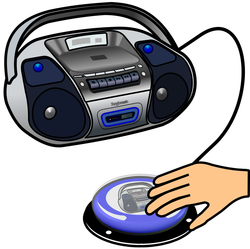
As day three is entirely practical (hands on), there is NO Talksense Training Course DAY THREE PowerPoint presentation available to download. The course is a round robin problem solving system. Participants are split into five groups that move around the room addressing the problems posed in five differing exercises using the equipment provided. Opportunities for feedback are provided at the end of the day.
Please Note: All Day Three course participants must have at least completed the Day One course.
Please Note: All Day Three course participants must have at least completed the Day One course.
Download: SwitchPics Jelly Bean Size

To download a completely free set of switch-pics (for non-commercial use only) that fit neatly under the switch caps of jelly bean switches and LITTLEmacks click on the symbol left. The download is a word document containing a number of switch-pics that serve many functions for which switches may be used. Simply cut around the dotted line and place under your switch cap. If you do not have switch caps then the symbols may be laminated for extra protection. Do not laminate the symbols if you are placing them under switch caps as the added thickness tends to force off the clear plastic switch cap.
File Updated 16/11/13
File Updated 16/11/13
Download: SwitchPics Big Red Size
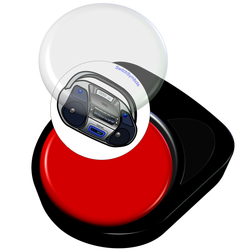
To download a completely free set of switch-pics (for non-commercial use only) that fit neatly under the switch caps of Big Red switches and BIGmacks click on the symbol left. The download is a word document containing a number of switch-pics that serve many functions for which switches may be used. Simply cut around the dotted line and place under your switch cap. If you do not have switch caps then the symbols may be laminated for extra protection. Do not laminate the symbols if you are placing them under switch caps as the added thickness tends to force off the clear plastic switch cap.
File Updated 16/11/13
File Updated 16/11/13
Download: Switching To Communication Word Document

To download the 'Switching To Communication' Paper (Word document) click on the symbol left. The paper was written by Judy King and Tony Jones and covers some of the things discussed on this page. As it is over three years old, it may be a little out of date now although most things are still relevant!
Bibliography and References
Ace Centre North, Switch Assessment and Planning Framework for Individuals with Physical Disabilities, http://www.ace-north.org.uk/pages/resources/documents/SwAssessmentFramework.pdf
Alliance for Technology Access (2000). Computers and Web Resources for Persons with Disabilities: A Guide to Exploring Today's Assistive Technology, 3rd edition. Alameda, CA: Hunter House.
Attermeier S. & Edmondson R. (1993) Baby Power; A guide for families for using assistive technology with their infants and toddlers. Chapel Hill, NC.: Center for Literacy and Disability Studies and Clinical Center for the Study of Development and Learning.
Bates R. & Melanie Jones M. (2003), Using computer software to develop switch skills, Presentation, 2003 CSUN Conference Proceedings.
Blackhurst A. E. & Lahm E. A. (2000). Technology and Exceptional Foundations. In - Technology and Exceptional Individuals, ed. Jimmy D. Lindsey. Austin, TX: Pro-Ed.
Blackstone S. (1989) Visual scanning: what=s it all about? Visual scanning: Training approaches, Augmentative Communication News, Volume 2, Number 4, pp. 1 -5
Briggs S. (2004), Inclusion and how to do it. David Fulton Publishers
Cook A. M. & Hussey S. M. (1994) Assistive Technologies: Principles and Practice. St. Louis, Missouri: Mosby.
DeCosteD.C.(1997), Augmentative and Alternative Communication assessment strategies: motor access and visual considerations. In - Handbook of Augmentative and Alternative Communication, Singular Publishing Group. Pp 243 - 282
Detheridge T. (1997) Bridging the Communication Gap (for Pupils with Profound and Multiple Learning Difficulties). British Journal of Special Education 24 (1) , 21–26
Flippo K. F., Inge K. J., & Barcus J. M. (Eds) (1995). Assistive Technology: A Resource for School, Work, and Community. Baltimore: Brookes.
Fried-Oken M., Howard J., & Stewart S. R. (1991) Feedback on AAC intervention from adults who are temporarily unable to speak, AAC, Volume 7, pp. 43 - 50
Galvin J. C. & Scherer M. J. (1996). Evaluating, Selecting and Using Appropriate Assistive Technology. Gaithersburg, MD: Aspen.
Glennen S.L. & DeCosteD.C.(1997), Handbook of Augmentative and Alternative Communication, Singular Publishing Group.
Goosens C. & Crain S.S. (1992), Utilizing switch interfaces with children who are severely physically challenged, Austin, TX: Pro-Ed
Gunderson J. (1985) Interfacing the motor impaired for control and communication. In - Electronic devices for rehabilitation pp. 190 – 229, Webster J. W., COOK A.M., Tompkins W. J., & Vanderheiden G. (Eds.) London: Chapman and Hall
Harris D. (1982) Communicative interaction processes involving non-vocal physically handicapped children, Topics in Language Disorders, Vol. 2, Number 2, pp. 21 - 37
Harris D. & Vanderheiden G. (1980) Enhancing the development of communicative Interaction. In – Non-speech language and communication: Analysis and intervention. pp. 268 – 269, Schiefelbusch R. L. (Ed.). Baltimore: University Park Press
Heller K.W. (2001). Adaptations and instruction in science and social studies. In J. L. Bigge, S. J. Best, & K. W. Heller (Eds.), Teaching individuals with physical, health, or multiple disabilities (4th ed.). Upper Saddle River, NJ: Merrill.
Johnston L., Beard L. & Bowden Carpenter L.(2006) Assistive technology: Access for all students. Prentice Hall
Kennedy C. H., Shukla S., & Fryxell D. (1997). Comparing the effects of educational placement on the social relationships of intermediate school students with severe disabilities. Exceptional Children, Vol 64, pp. 31-47.
Levin J. & Scherfenberg L. (1986) Breaking Barriers: How Children and Adults with Severe Disabilities Can Access the World Through Simple Technology. Minneapolis, MN: AbleNet.
Levin J. & Scherfenberg L. (1990),Selection and Use of Simple Technology in Home, School, Work, and Community Settings. Minneapolis, MN: AbleNet.
Light J. (1989) Message encoding techniques for augmentative communication systems: An investigation of the recall performances of non-speaking physically disabled adults. Doctoral dissertation. University of Toronto
McDonald E. (1980) Early identification and treatment of children at risk for speech development, In - Nonspeech language and communication: Analysis and intervention. pp. 259 – 301, Schiefelbusch R. L. (Ed.). Baltimore: University Park Press
Male M. (1994) Technology for Inclusion: Meeting the Special Needs of All Students (2nd edition). Boston, MA: Allyn and Bacon.
McGrath C. (2007), The Inclusion-Classroom problem solver, Portsmouth, NH, Heinemann
Mu K., Siegel E. B., & Allinder R .M. (2000).Peer interactions and sociometric status of high school students with moderate orsevere disabilities in general education classrooms. Journal of The Association for Persons with Severe Handicaps, 25(3), pp. 142-152.
Musslewhite C. R. (1986) Adaptive Play for Special Needs Children. Boston, London: Taylor and Francis.
Musslewhite C. R.(1987) Augmentative Communication. In - Treating Cerebral Palsy, for clinicians by clinicians: McDonald E. (Ed.), Austin, Texas: Pro-Ed
Musslewhite C. R.(2003) Write to Talk – Talk to Write, Life skills and technology for independence
Musslewhite C. R.(2009) Literacy For All, Communication Matters Study Day, Manchester, May 7th
Ratcliff A. (1994), Comparison of relative demands implicated in direct selection and scanning: Considerations from normal children, AAC, Volume 10, June 1994, No. 2, pp. 67 -74
Rowland C. & Schweigert P. (1993). Analyzing the communication environment to increase functional communication. Journal of the Association for Persons with Severe Handicaps (Special Issue on Communication), 18, 161-176.
Saya M., Pelican Y., & Barr L. (1984) Six critical factors in the prescription of technical aids, Proceedings of the 2nd International Conference on Rehabilitation Engineering. pp. 68 -69, Washington, DC: Resna press
Schwarz P. (2006), From Disability to Possibility: The power of Inclusive Classrooms. Portsmouth, NH: Heinemann
Shane H. C., Lipschultz R. W., & Shane C. L. (1982), Facilitating the communicative interactions of non-speaking persons in large residential settings, Topics in Language Disorders, 2, pp. 73 - 84
Van Tatenhove G. M. & Vertz S. (1993e), Strategies for the inclusion, independence, and empowerment of nonspeaking students using the TalkSense Communication aid, 14th Southeast Annual Augmentative Communication Conference Proceedings, pp. 127 - 141, Birmingham, Alabama: SEAC
Vanderheiden G. (1976), Synthesized speech as a communication mode for the non-vocal severely handicapped individuals, Madison, WI: TraceCenter, University of Wisconsin
Vanderheiden G. (1984), High and low technology approaches in the development of communication systems for severely physically handicapped persons. In - Exceptional Education Quarterly, Vol.4 No.4 pp. 40-56
Vanderheiden G. & Lloyd L. L. (1986), Communication systems and their components. In - Augmentative Communication: An introduction, PP. 49 – 163, Blackstone S. (Ed.), Rockville, MD: ASHA
Von Tetzchner S. & Martinsen H. (1992a) Introduction to Sign Teaching and the Use of Communication Aids. Whurr Publishers ISBN 1-870332-28-8
Von Tetzchner S. & Martinsen H. (1992b) Introduction to symbolic and augmentative Communication. San Diego: CA: Singular Publishing
Whittle H. & Townend S. (1995), Developing switching skills for use with an electronic communication aid, 7th Annual European Minspeak Conference, Proceedings, Swinstead: TalkSense Ltd.
Contact / Have your say
Thank you, your message has been sent




